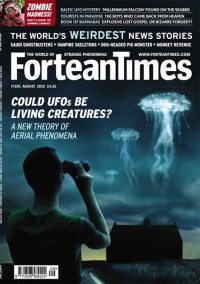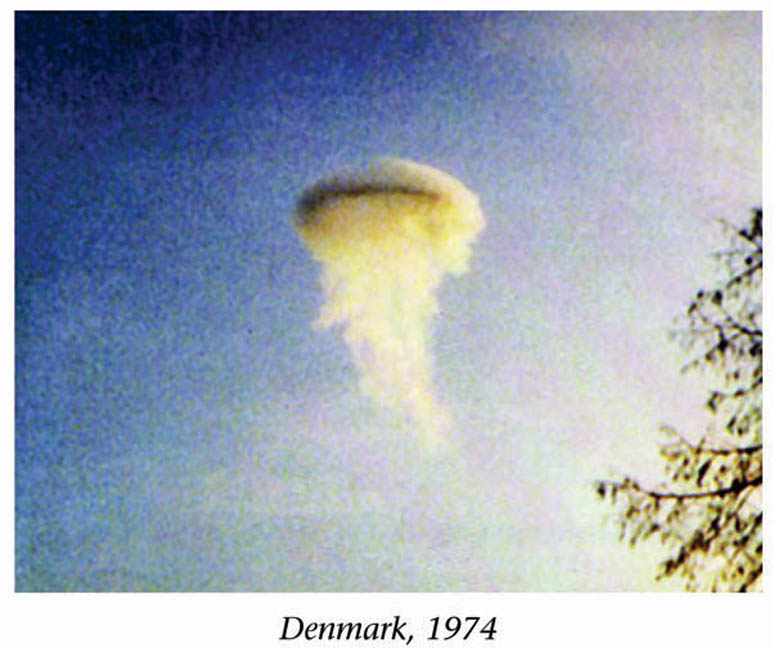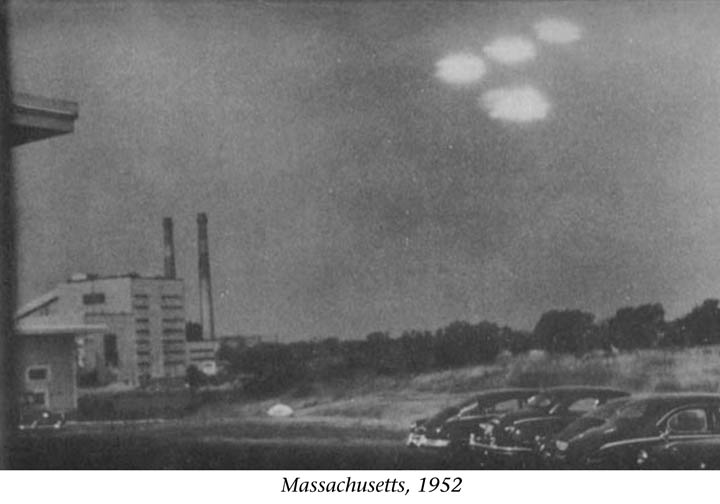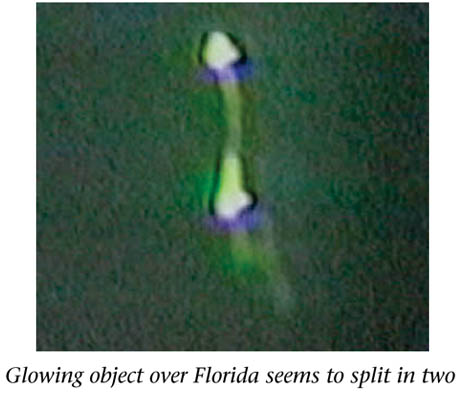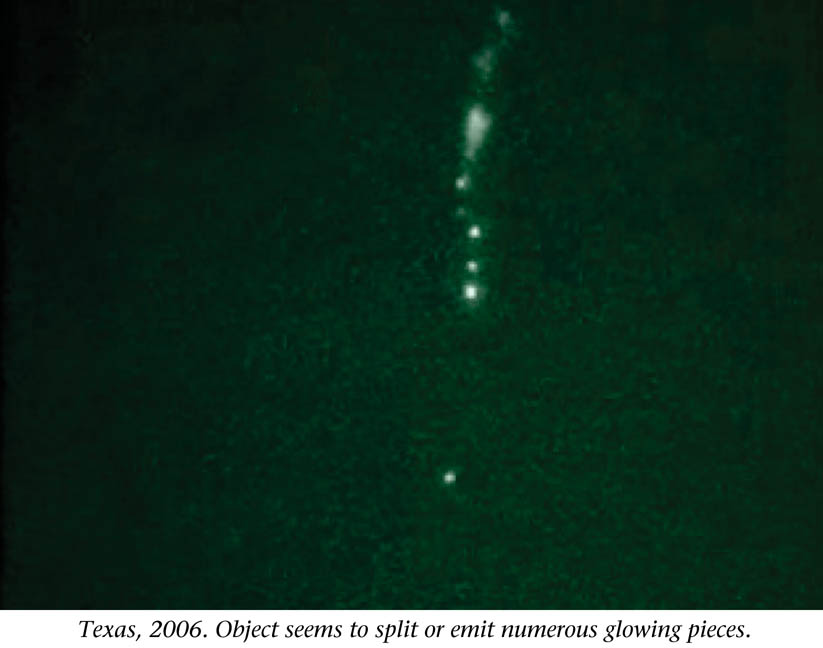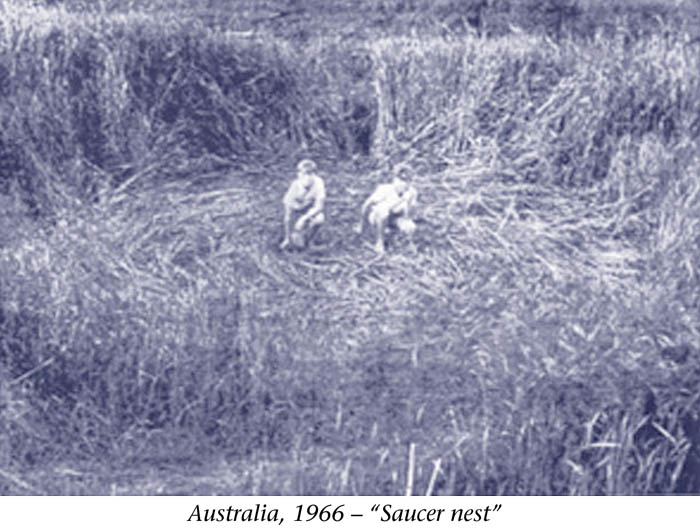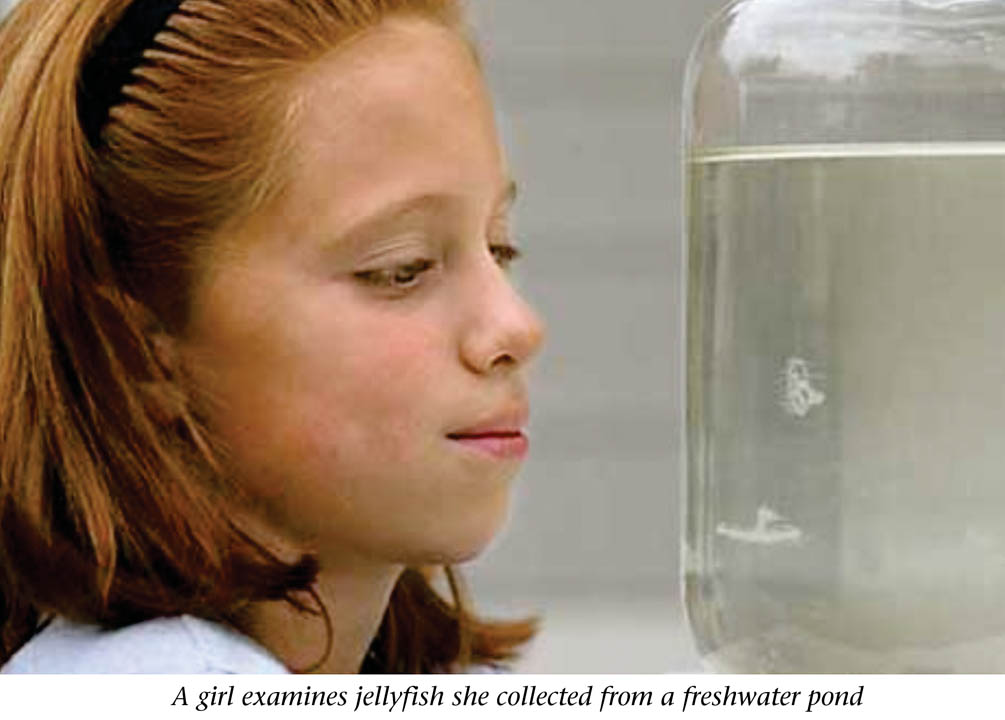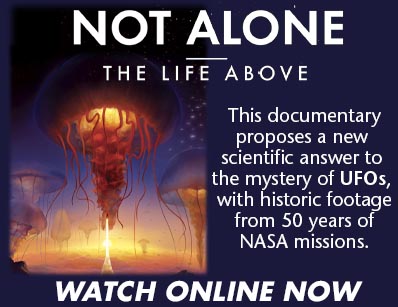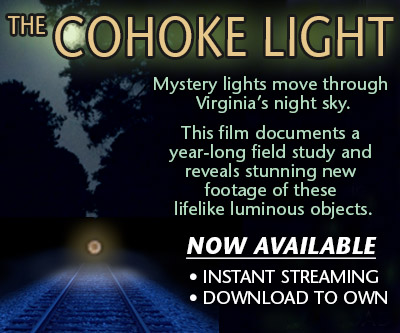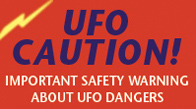This article previously appeared in Fortean Times, the world’s foremost journal of strange phenomena.
THE SKY IS ALIVE
Are Many UFOs Atmospheric Creatures?
By Scott Deschaine
The number and variety of UFO reports have long puzzled experts.
Could the answer be simple, yet wondrous as life itself?
In 1988, a young astronomy buff saw a weird object pulsing through the London sky.
She alerted police, who also saw the flying object, and described it as a “jellyfish”.[i]
We live at the bottom of an ocean of air.
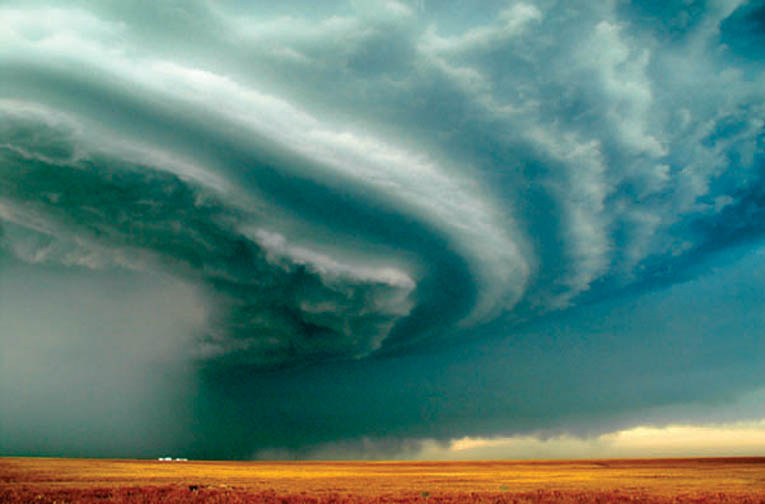
The atmosphere that surrounds us contains all the resources needed to support life. Tons of water in many forms move through the sky at all levels. Minerals drift and drop in from space and swirl up from surface soil. Energy constantly crackles around the globe.
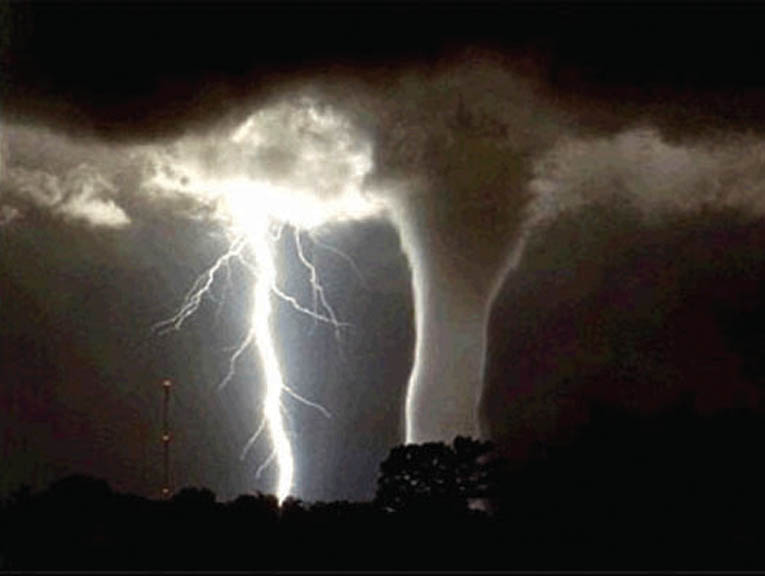
Our atmosphere is a habitat.
Earth’s liquid oceans teem with more life than we can imagine. A teaspoonful of ocean water may contain more than one million bacteria and one hundred million viruses. Some of earth’s biggest and fastest animals live in the seas.
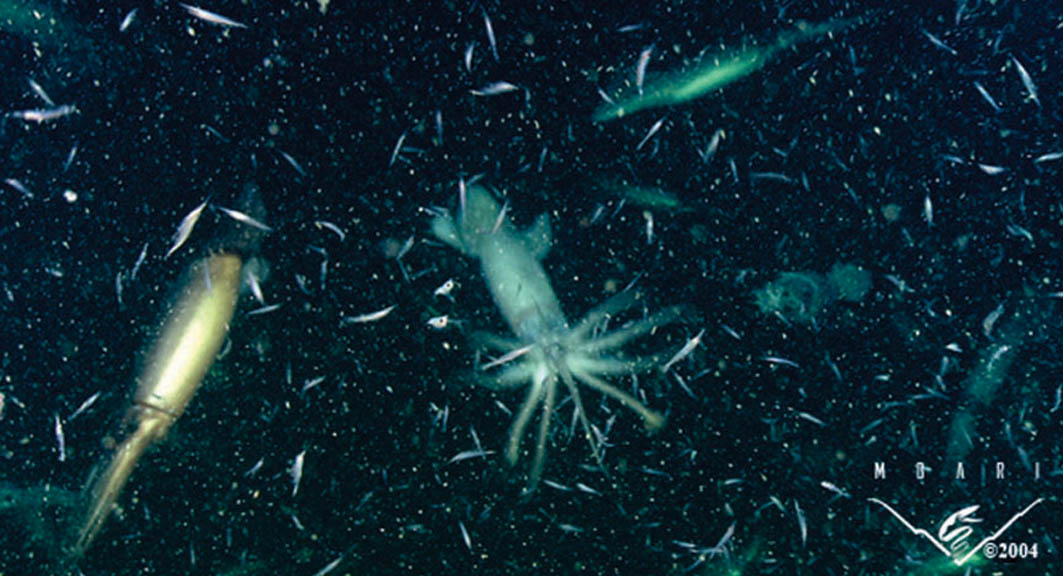
The atmosphere has 5 million times the volume of the ocean.
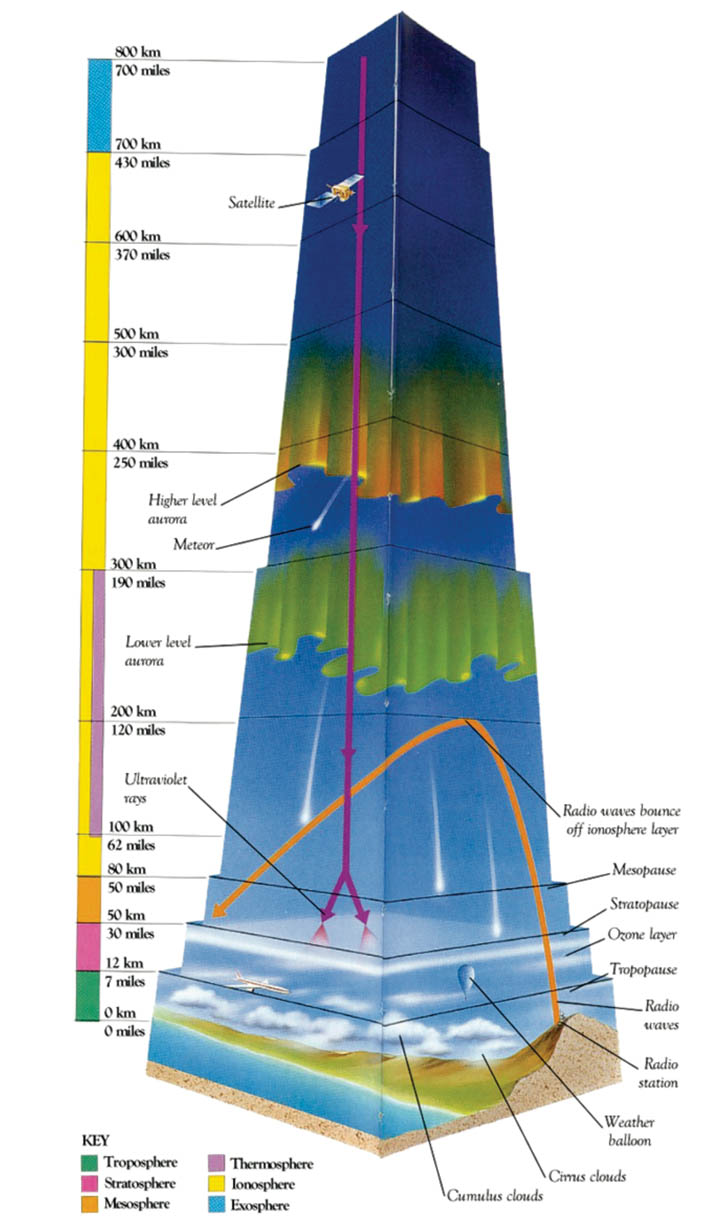
There is no hard line between sky and water – rather an interface of constant exchange. Sky, soil, and sea are all part of one system.[ii]
What if a wide range of creatures moves through the sky for part of their lives?
We might see a huge variety of objects at all levels of the atmosphere…
Objects like UFOs, mystery lights, ball lightning, earthquake lights, and transient luminous events. The number and variety of unexplained atmospheric phenomena surpass our comprehension.
In Illinois in 1963, a glowing object followed a young man and his date as they drove to her parents’ house. They ran inside. Her parents saw the object, and then it disappeared. When the man left to drive home, it reappeared. His terrified parents watched him dash from the car as the object hovered overhead. It had followed him for almost an hour.[iii]
From our vantage point on earth’s surface, we have a limited view of the atmosphere. We’ve been reaching tentatively into the sky for just over 100 years.
Our technological flight may cause some to interpret what we call UFOs as craft. Some say UFOs are optical illusions or meteorological phenomena. The answer to the UFO question may be “All Of The Above”.
Yet a strong body of evidence suggests another possibility – a wide variety of aerial creatures – a biology of the sky.
UFO historians know Kenneth Arnold’s seminal 1947 “flying saucer” sighting.
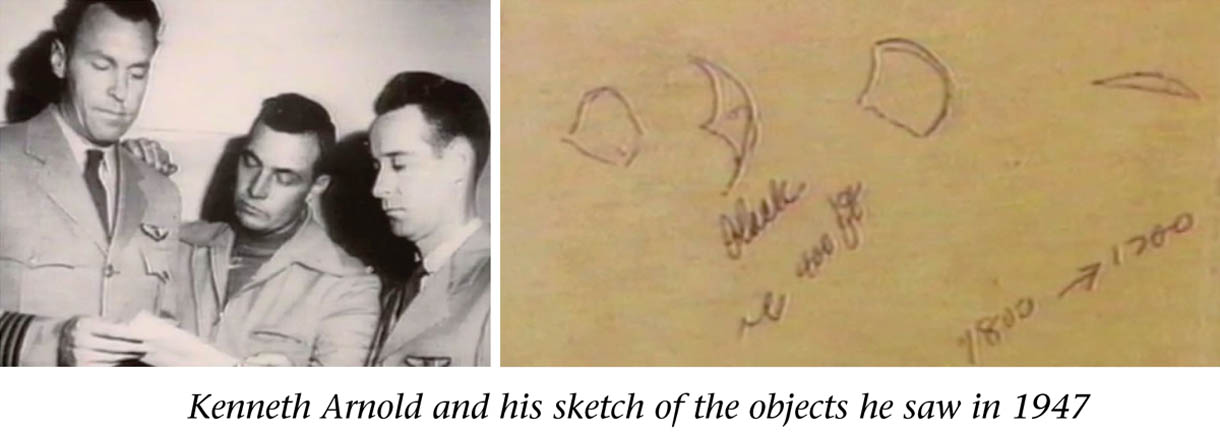
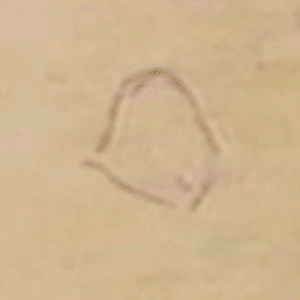
Arnold studied UFOs the rest of his life, collecting numerous stories from pilots. He concluded that UFOs are living things, fauna of the atmosphere.[iv]
One pilot told Arnold that he was approached in flight by what he called a “rayfish” larger than his plane. The edges of its wings rippled like those of a marine ray.[v]
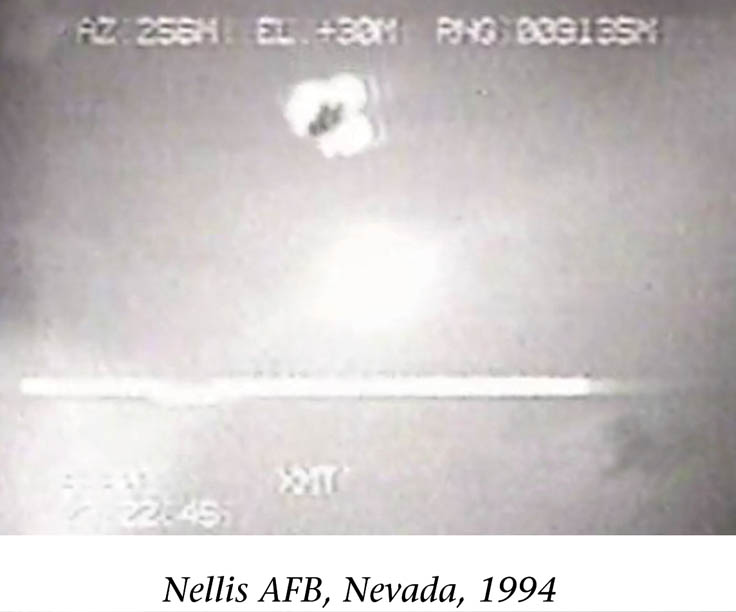
The U.S. Air Force, in its first study of UFOs in 1949, said, “many acted more like animals than anything else.”[vi]
Marine invertebrates are some of the largest, most numerous, and most amazing animals on earth. Many are ideally suited to move in a fluid habitat.
Jellyfish
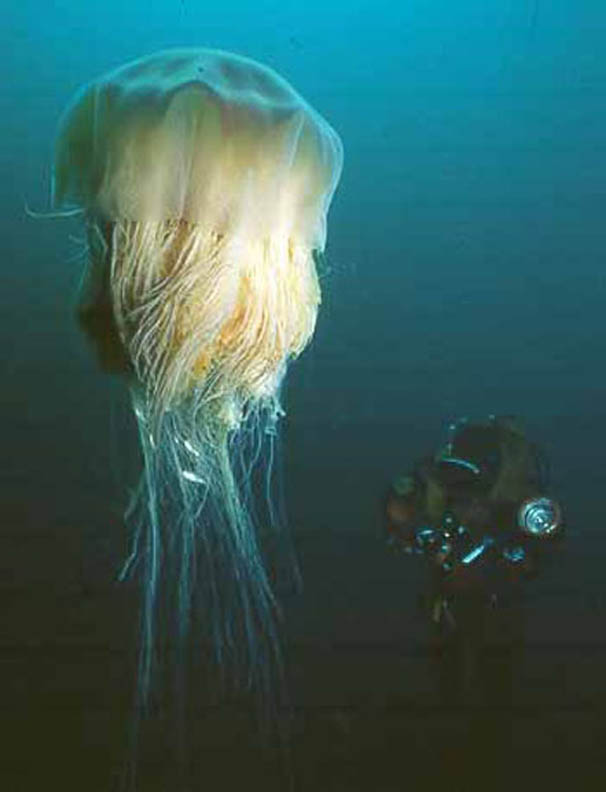

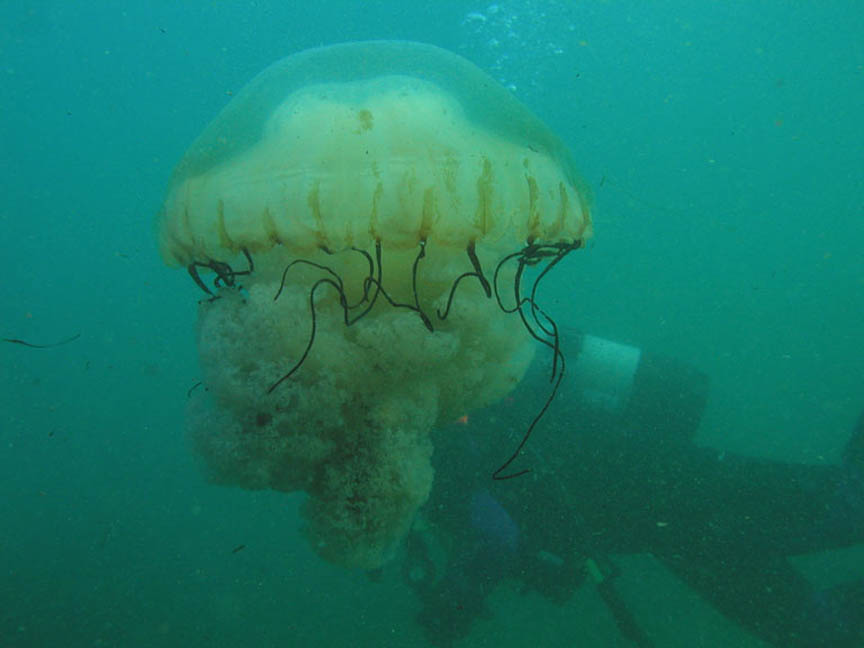
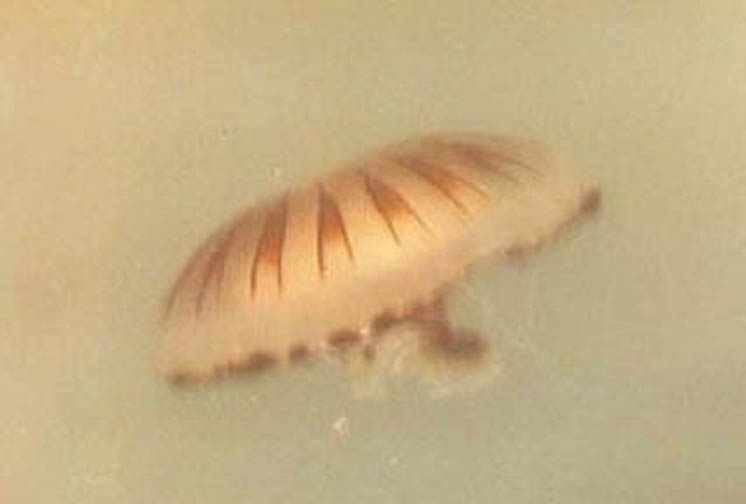
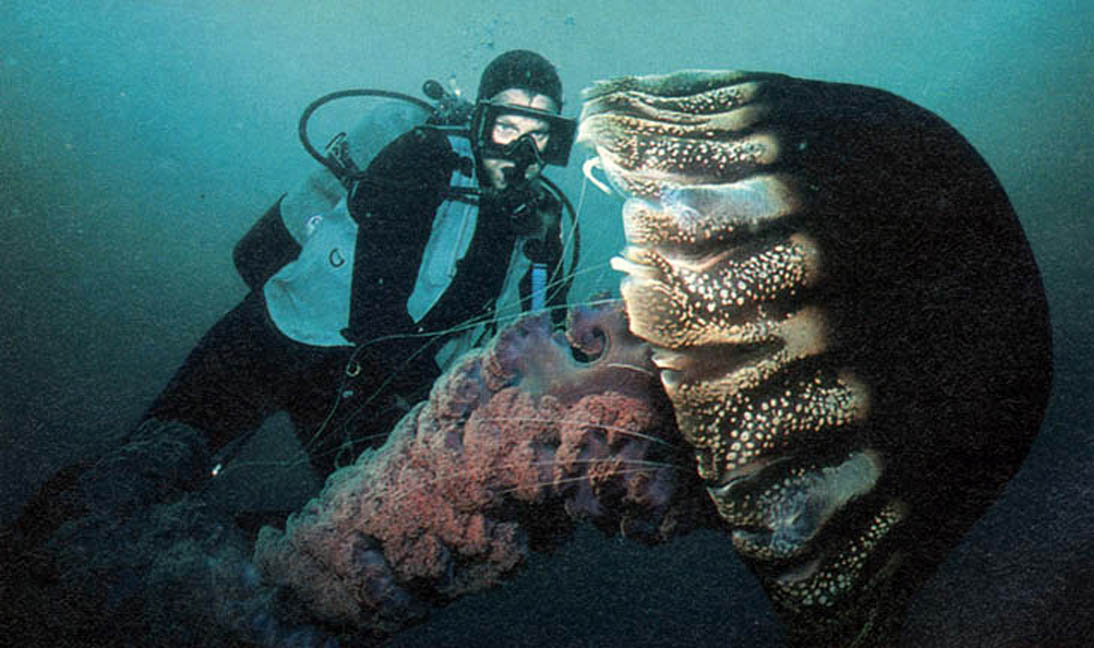
Squid
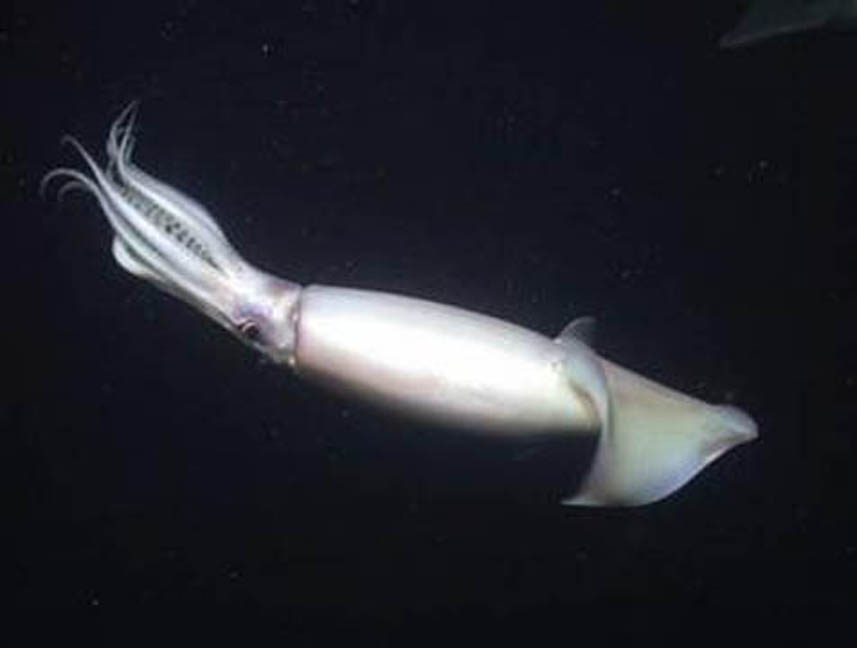
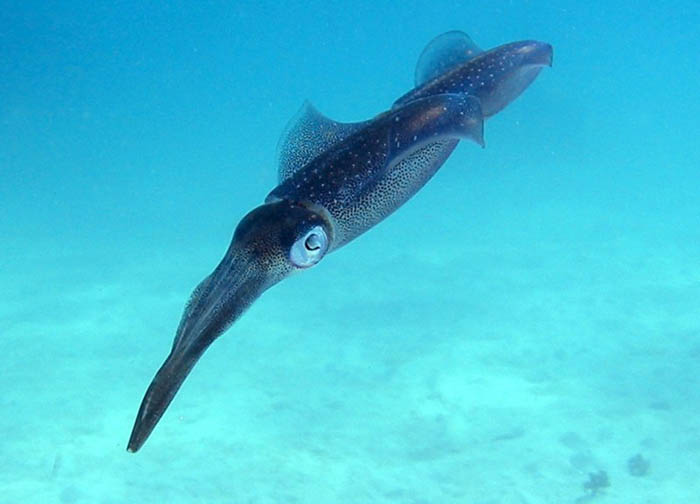
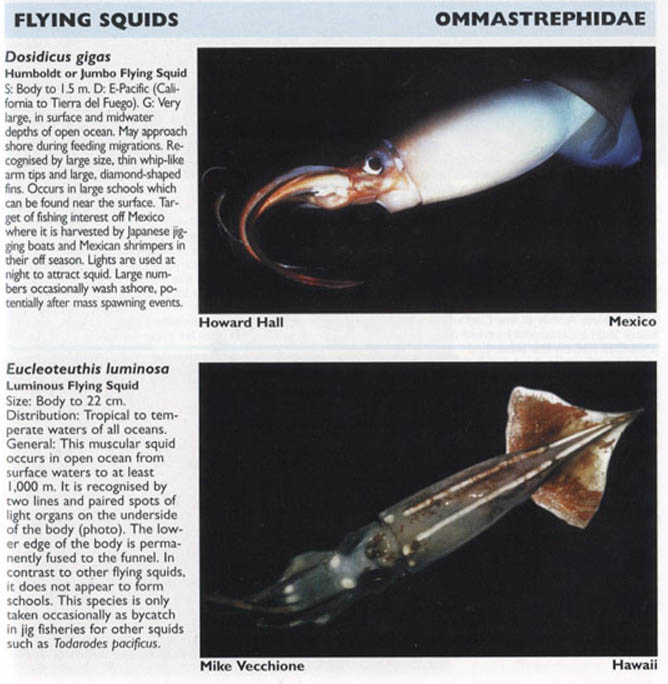
Invertebrates are prolific and adaptive. Without a limiting skeleton, they can grow to huge sizes. In 1870, a 256-foot long jellyfish washed ashore – it dwarfed a blue whale. Giant squid swim freely away from our fastest submarines.
In 1973, a giant jellyfish nearly sank the steamer Kuranda in the Indian Ocean. The creature’s gelatinous body covered the decks, two feet deep. One sailor was stung to death by huge lashing tentacles.[vii]
Invertebrates use sexual and asexual reproduction, for propagation in many conditions. Some can shrink and revert to younger forms – a kind of immortality.
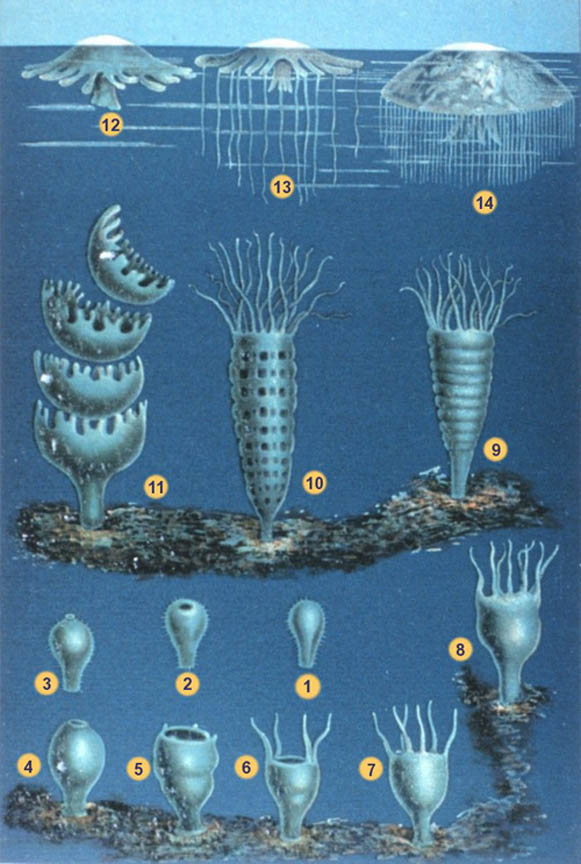
Nature is like a playful composer, spinning endless variations of successful themes.
Here are ten ways UFOs and other unexplained aerial phenomena resemble marine invertebrates:
Ten Parallels Between UFOs And Marine Invertebrates
1. Appearance
UFOs have been reported in countless numbers, varieties, and sizes – from tiny to enormous. Day and night sightings seem to describe two common shapes – saucers and rockets or cigars.
Saucer-shaped jellyfish and rocket-shaped squid are some of the most successful marine invertebrates.
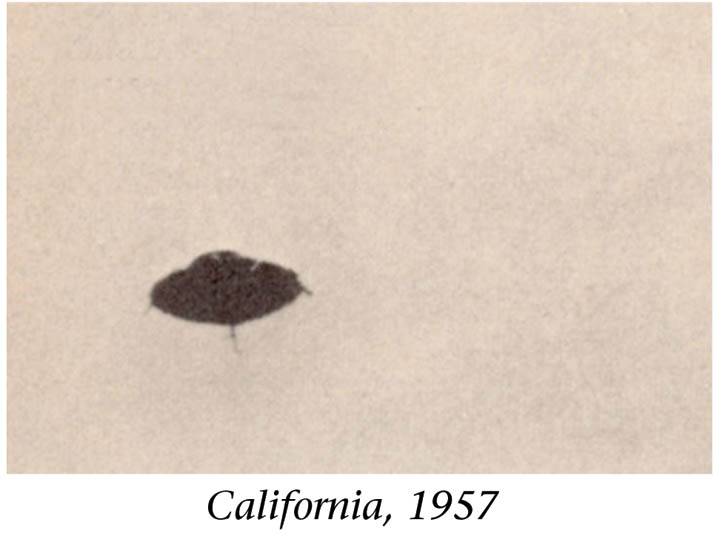
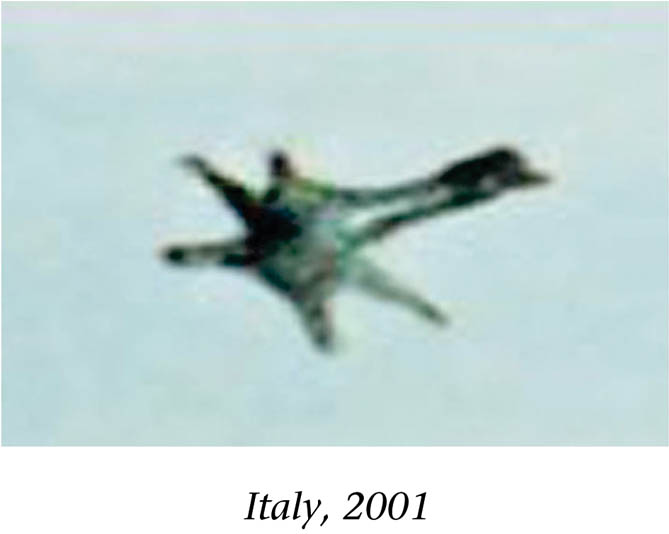
People report UFOs like “parachutes”, “ice cream cones”, and “shuttlecocks”. Witness drawings show organic-looking objects. Pilots and police describe “giant flying jellyfish”.
For two nights in 1891, residents of Crawfordsville, Indiana watched a bellowing, pulsing, wheezing monster in the sky above their town. Its glowing red “eye” flashed, as it seemed to struggle. All who watched it felt it was alive.[viii]
Tentacles? Witnesses describe “trailing appendages”, “arms”, “feelers”, “antennae”.
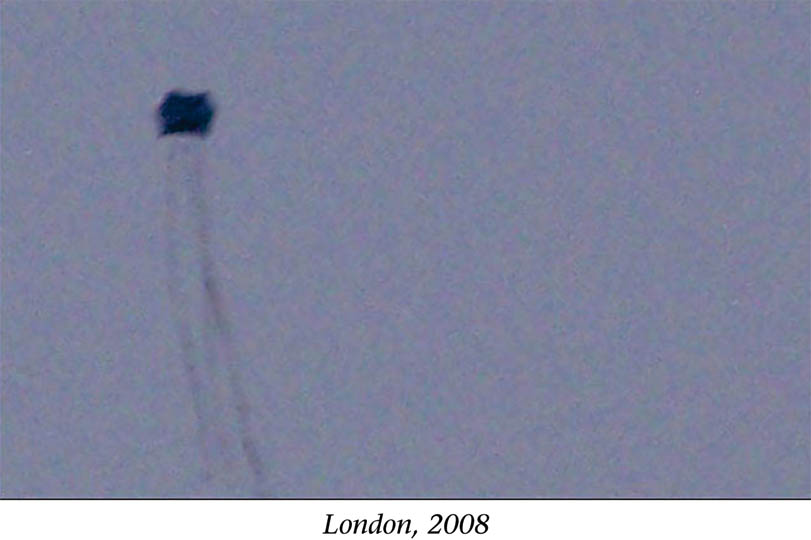
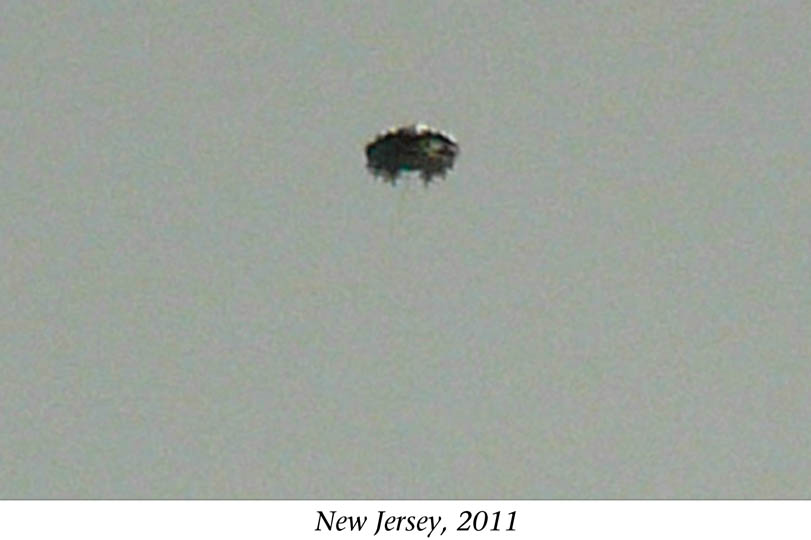
Many UFO witnesses report translucent or fuzzy edges around a saucer shape. Marine invertebrates are composed mainly of the medium in which they live. Perhaps aerial invertebrates are mainly gas and water vapor.
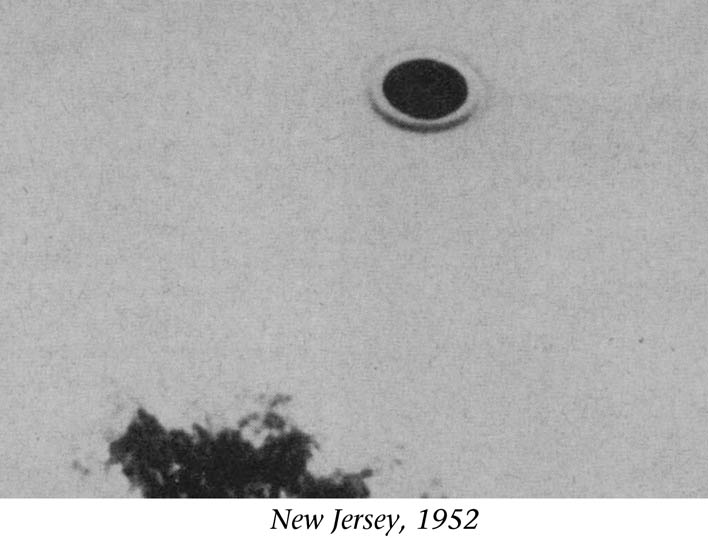
Many jellyfish have a dense saucer-shaped ring of muscle in the center of a gelatinous body. This pulses to propel the animal. In bright light, this saucer shape may be all that is visible to us.
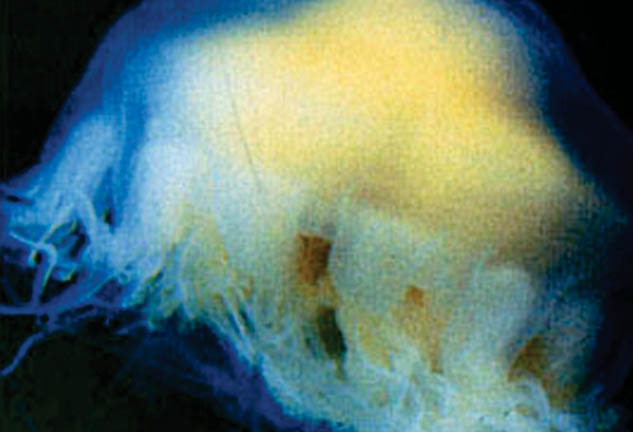
Compare many quality UFO photographs with this invertebrate anatomy. Even mechanical looking objects find parallels with nature’s intricate designs.
At night, they show an amazing variety of lights.
2. Bioluminescence
Marine invertebrates use a variety of luminescence methods. Some harbor symbiotic glowing bacteria. Some generate chemical reactions for brilliant flashes. They are masters of living light.
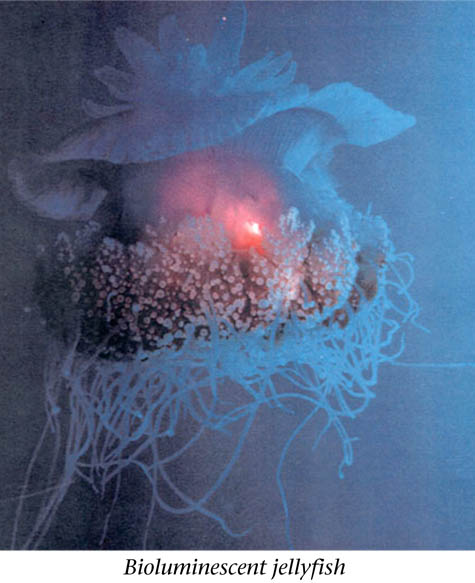
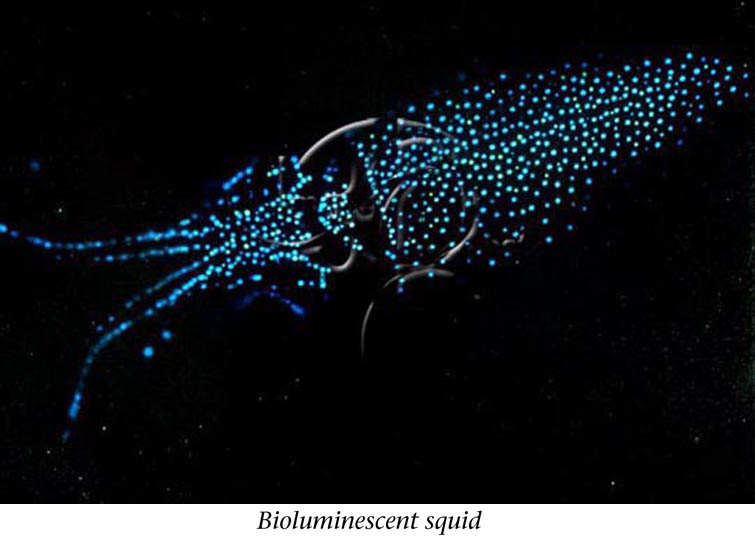
They show displays of light beyond what we can see or even perceive.
UFOs seem to use lights, singly or in great numbers, to hunt, attract, warn, and scare, just like bioluminescent creatures of the sea. Some UFO witnesses say they can’t even describe the colors they have seen.
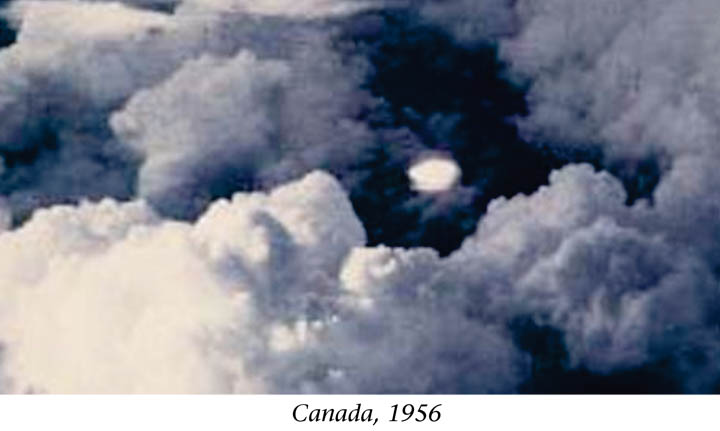
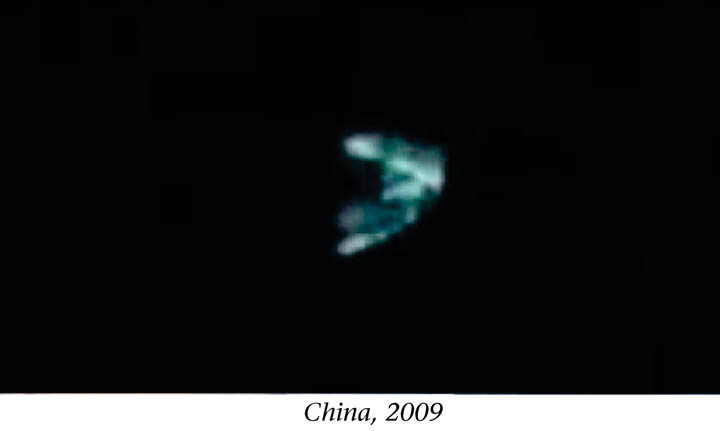
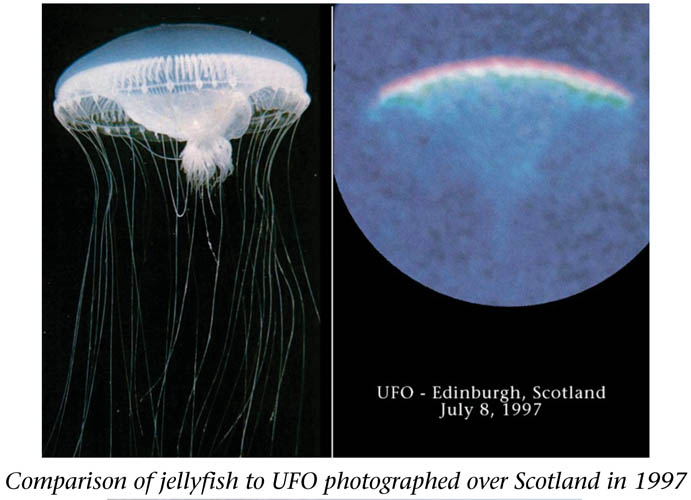
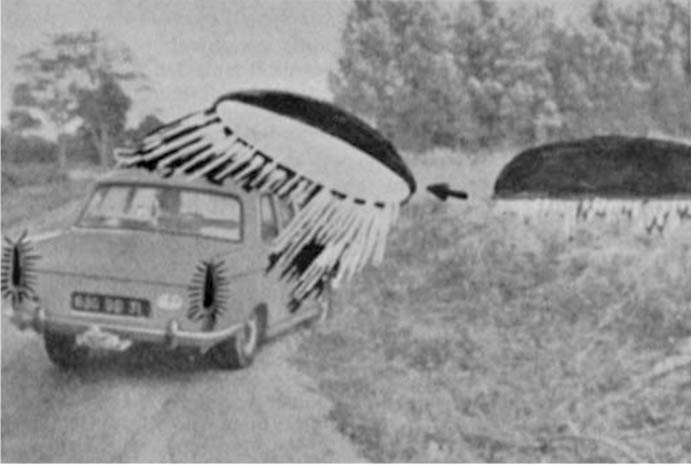 In 1975, a former policeman drove his car on the road to a French village. A strange glowing disc-shaped object glided across the field toward him. Suddenly, it reared up, flashing a blinding light, “brighter than the sun!” The object latched onto and tried to lift his car. He went off the road, and the object left. Luckily, though shaken, he escaped.[ix]
In 1975, a former policeman drove his car on the road to a French village. A strange glowing disc-shaped object glided across the field toward him. Suddenly, it reared up, flashing a blinding light, “brighter than the sun!” The object latched onto and tried to lift his car. He went off the road, and the object left. Luckily, though shaken, he escaped.[ix]
Bioluminescence may help explain how some UFOs seem to disappear – they just turn off the lights.
3. Movement
Jellyfish are living helicopters. They create their own fluid vortexes to ride.[x]
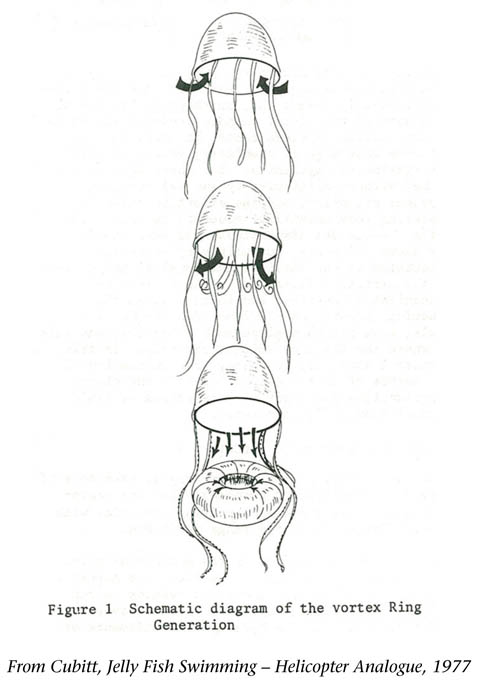
Squid are living jets. They can rocket around, hover, and control their buoyancy.
These two broad categories of life are perfectly adapted for fluid environments. In the fluid atmosphere, similarly shaped UFOs perform similar amazing movements.
They change shape as they move. Some expand and contract.
Many descend in a “falling leaf” motion typical of jellyfish.
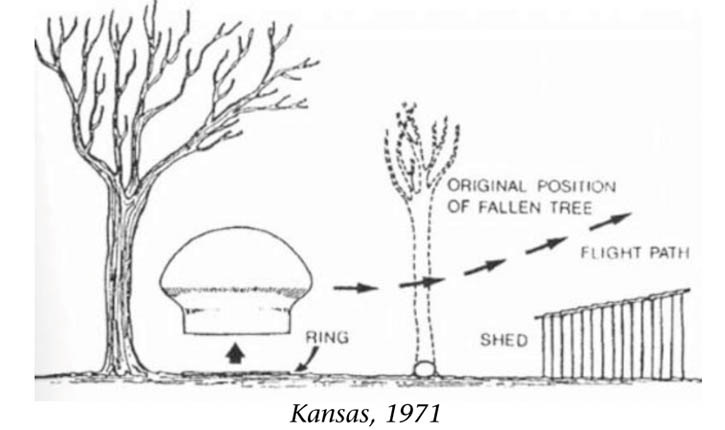
They hover almost motionlessly, and then pulse to soar away with a whoosh.
UFOs move like marine organisms.
4. Individual Behavior
Many witnesses say UFOs seem to act with purpose.
Some show curiosity about people and vehicles. Many seem to show intelligence.
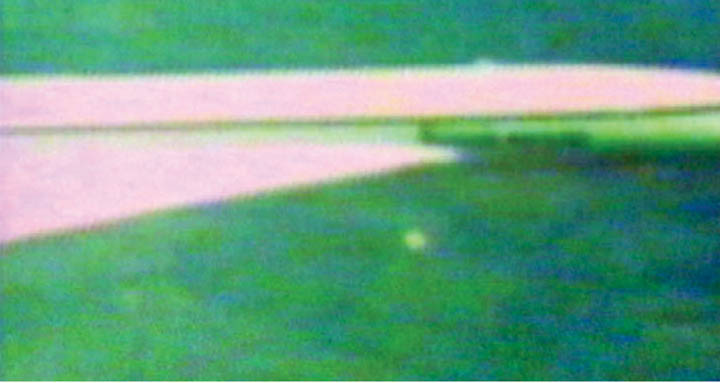 In 1976, a professional camera plane flew alongside the streamlined Concorde to film a commercial. Suddenly, a pulsing blob raced up to the Concorde. It flew alongside it for a few moments, seeming to peer into the windows. Then it raced effortlessly away.[xi]
In 1976, a professional camera plane flew alongside the streamlined Concorde to film a commercial. Suddenly, a pulsing blob raced up to the Concorde. It flew alongside it for a few moments, seeming to peer into the windows. Then it raced effortlessly away.[xi]
Perhaps instead of having intelligent pilots, the creatures themselves are smart. Perhaps smarter than we can imagine.
In 1956, an Air Force plane flew over the north Atlantic. The crew saw what looked like a small, lighted island in the water below, where no islands were known. They watched in shock as the whole object, three times bigger than their plane, rose out of the water, then easily paced and flew around their plane for miles.[xii]
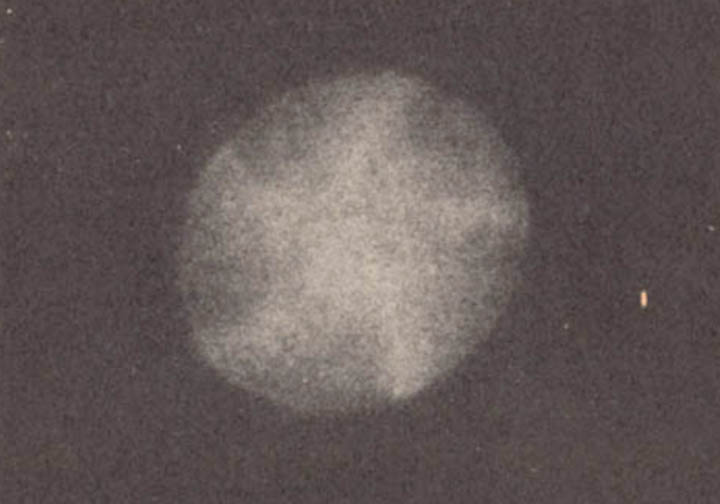 From plane over Washington state, 1965. Pilots said the object was “sizing them up.”
From plane over Washington state, 1965. Pilots said the object was “sizing them up.”
UFOs act individually, and in groups.
5. Group Behavior
Like marine invertebrates, UFOs seem to appear in groups and interact with each other. Photographs and video seem to show large groups of lifelike objects in the sky. Some seem to chase, some to work together, and some to court.
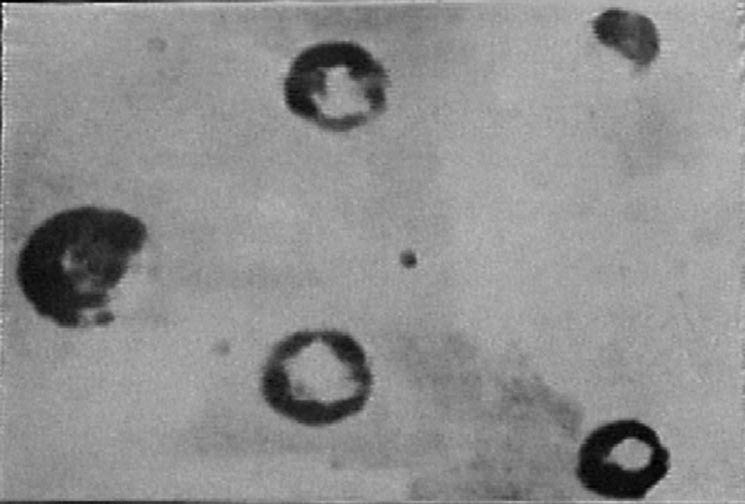 For three days in 1950, an armada of unexplained flying objects passed through the sky over Farmington, New Mexico. Thousands of objects seemed to play and fight with each other as they passed overhead. Air Force investigators scoured the town for every picture taken by residents. One resident who took a picture was out of town, so his picture survives. It shows dozens of disc-shaped objects in various shapes, as if in movement.[xiii]
For three days in 1950, an armada of unexplained flying objects passed through the sky over Farmington, New Mexico. Thousands of objects seemed to play and fight with each other as they passed overhead. Air Force investigators scoured the town for every picture taken by residents. One resident who took a picture was out of town, so his picture survives. It shows dozens of disc-shaped objects in various shapes, as if in movement.[xiii]
6. Life Cycles and Populations
UFOs often appear in “waves”, “flaps”, and “armadas”, rapidly rising in number. This resembles invertebrate populations that blossom when living conditions turn favorable.
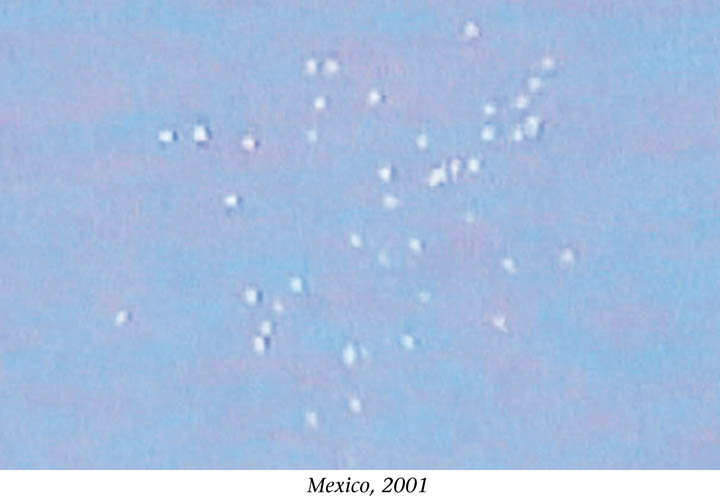 UFO sightings sometimes occur in cycles, sometimes seasonally.
UFO sightings sometimes occur in cycles, sometimes seasonally.
UFO reports describe many apparent forms of reproduction, including budding, splitting, and dropping eggs.
7. Feeding… And Hunting
Some jellyfish are farmers, hosting photosynthetic algae.
However, most jellyfish and squid are high-level predators that use a variety of hunting techniques.
UFOs seem to attack each other, targeting similar or different UFOs.
They seem to attack animals. Thousands of reports of cattle mutilations describe strange lights hovering over the fields of the victims. Dead animals and even people are unexplainably found in the tops of tall trees.
UFOs attack vehicles. Some have followed cars for miles, bumping against them, flashing bright lights.
 In 1988, a mother and her three sons drove frantically along an Australia desert highway. A glowing object landed with a thump on top of their moving car. It whooshed a foul smell, like decomposing flesh. The mother reached out her window and touched its spongy body. Then the object lifted their car right off the ground! Luckily for the family, it dropped the car, bursting a tire.[xiv]
In 1988, a mother and her three sons drove frantically along an Australia desert highway. A glowing object landed with a thump on top of their moving car. It whooshed a foul smell, like decomposing flesh. The mother reached out her window and touched its spongy body. Then the object lifted their car right off the ground! Luckily for the family, it dropped the car, bursting a tire.[xiv]
Some have attacked and destroyed planes.
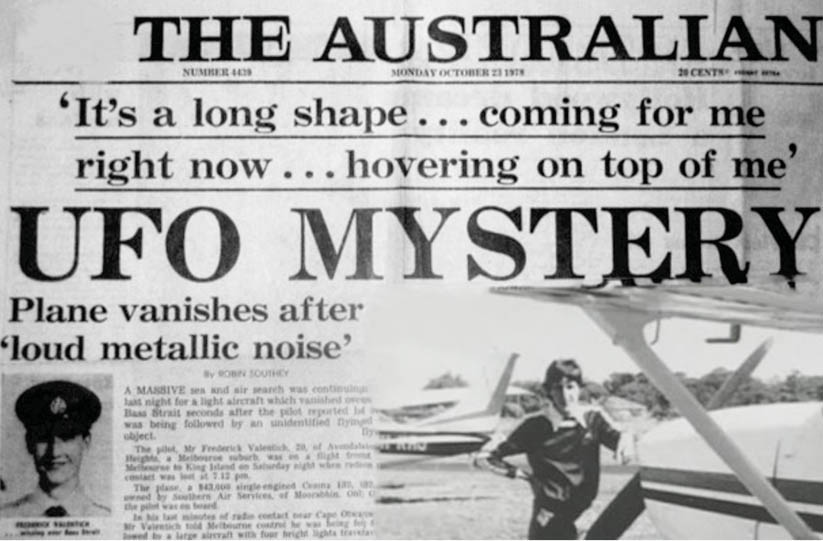 In 1978, a young Australian pilot in his small plane above the Tasmanian Strait radioed air controllers that the UFO seemed to be toying with him. It raced back and forth, and then hovered right above him. Just before his radio went silent, he said, “It is hovering…and it’s not an aircraft!”[xv]
In 1978, a young Australian pilot in his small plane above the Tasmanian Strait radioed air controllers that the UFO seemed to be toying with him. It raced back and forth, and then hovered right above him. Just before his radio went silent, he said, “It is hovering…and it’s not an aircraft!”[xv]
Tales of hunting UFOs may come from the lucky witnesses that got away. Sometimes people don’t escape unscathed.
8. Effects On Humans
Invertebrates hunt with some of the strongest neurotoxins and digestive compounds known. They may eject toxins into their fluid environments. They may inject directly, using millions of stingers on thousands of tentacles.
Fine jellyfish tentacles can extend many times farther than the animal’s main body. One species’ tentacles can cover a basketball court.
People show a range of symptoms when exposed to invertebrate toxins, depending on the organism and the extent of the exposure.
Mild physical symptoms:
- Eye irritation and damage
- Reddening and swelling of skin
More severe physical symptoms:
- Blistering and peeling of skin
- Heart damage, including collapse and arrest
- Lung damage and breathing problems
- Nausea and vomiting
- Kidney damage
- Muscle damage, including destruction of skeletal muscles
- Destruction of red blood cells
Neurological symptoms:
- Disruption of autonomic nervous system
- Loss of coordination
- Tingling or numbness
- Paralysis
- Headache
- Agitation and panic
- Seizures
- Stupor or coma
- Neuropsychiatric disturbances such as depression, apathy, and hallucinations
Many UFO witnesses experience physical and psychological effects consistent with exposure to similar toxins. Some jellyfish and UFO victims describe bolts or rays that stun or leave them senseless, sometimes even from a distance.
In 1946, a glowing white object enveloped a Brazilian man who was walking home. He escaped and ran inside. He fell stricken, his nerves frozen, his body falling apart as if being digested. He soon died, unaware of pain, fully conscious to the end.[xvi]
A group of medical professionals studied short and long-term physical and psychological effects of UFO exposure. They noted the following effects were found repeatedly:
Mild physical symptoms:
- Eye irritation and damage
- Reddening and swelling of skin
More severe physical symptoms:
- Blistering and peeling of skin
- Chest pains, hypertension
- Nausea and vomiting
- Muscle damage, including destruction of skeletal muscles
- Destruction of red blood cells
Neurological symptoms:
- Loss of coordination
- Tingling or numbness
- Paralysis
- Headache
- Agitation and panic
- Stupor or coma
- Neuropsychiatric disturbances such as depression, apathy, and hallucinations[xvii]
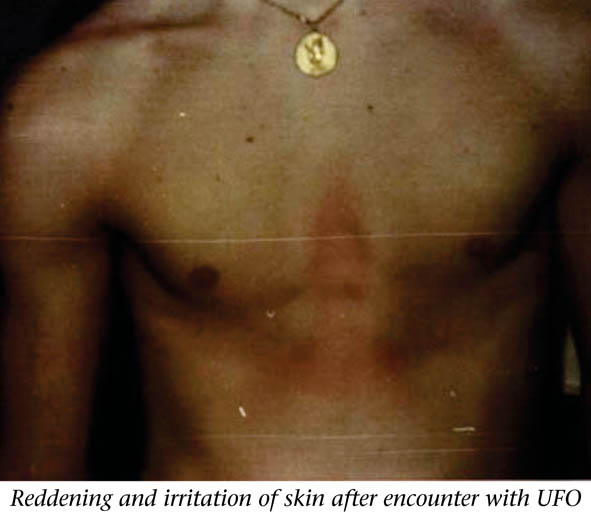
UFO encounters have killed and injured many people. Some manage to escape, but never fully recover.
Beware UFOs! If you see them, do not approach! Their bright lights are meant to attract, but their toxins may affect you, even at a distance.
9. Physical Traces and Tracks
Swarms of sky organisms should leave physical evidence of their bodies and movement. A variety of physical evidence seems to show such tracks and traces.
Organic gelatinous material regularly falls and showers the planet. “Glowing meteors” and “rot of the stars” describe falling glowing blobs. In 1994, countless gelatinous blobs, biological in origin, rained upon a small town in Washington State, sickening people and animals.[xviii]
Sometimes what may be excretions drop from the sky – body parts, flakes of flesh, and rains of blood.
Some UFOs shed strange filaments called “angel hair”. This material visually resembles jellyfish tentacles. It usually sublimates quickly. Chemical analysis of a few samples has found the same minerals found in marine jellyfish.[xix]
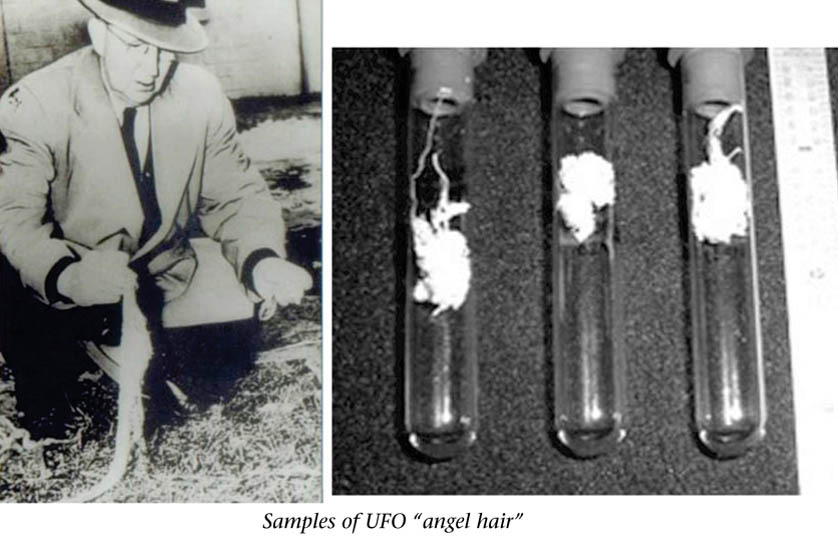
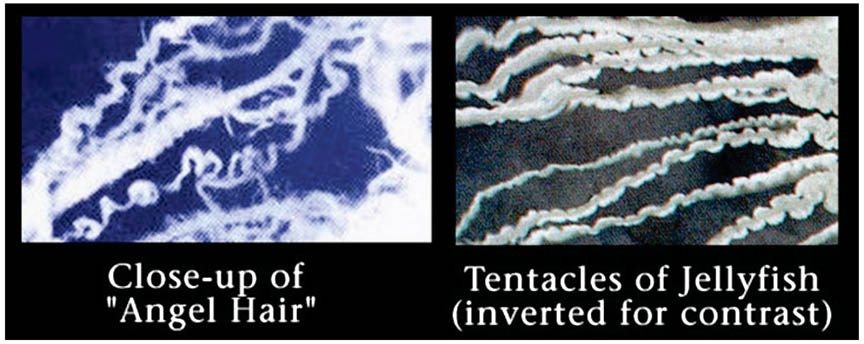
Sometimes what may be entire bodies fall.
In 1950, two Philadelphia policemen watched a glowing purple light fall from the sky into a vacant lot. They saw a pulsing gelatinous disc, about six feet across. They felt it was alive. Two other policemen came. They watched the disc for forty minutes until it dissolved and completely disappeared.[xx]
Huge flying bodies that pulse to propel themselves on vortexes of air might make tracks in vegetation.
From saucer nests to crop circles, we see imprints in vegetation and soil caused by the rest and movement of circular objects. Could flying rings of muscle leave such imprints with their powerful vortexes as they hunt, chase, and court?
10. Likely Habitats
The atmosphere is an incredibly varied habitat. Evidence of aerial life seems to be found in likely resource-rich habitats in the sky, at almost every level.
UFOs are reported entering, leaving, and spending time around water. John Keel produced a map of UFO sightings during a bizarre flap in 1966, showing how they concentrated around lakes and rivers.[xxi]

If the atmosphere is like the ocean, crevices in its bottom might provide shelter for organisms. We find “mystery lights”, “spook lights”, and “ghost lights” near caves, springs, faults, and other geologic features.
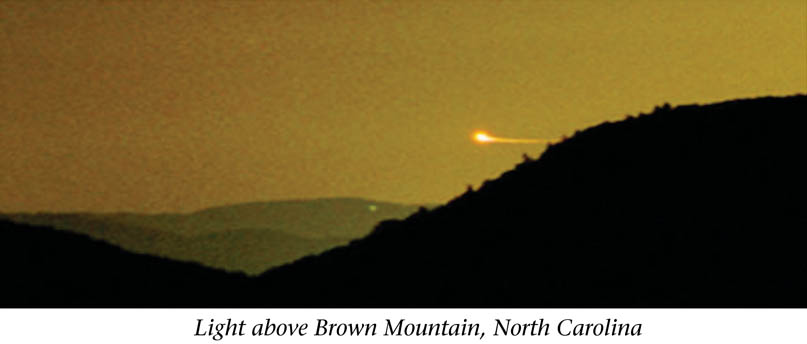
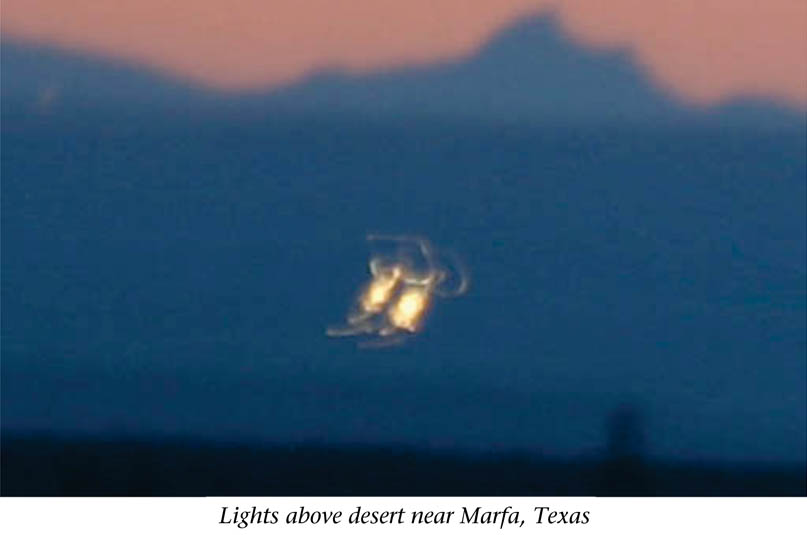
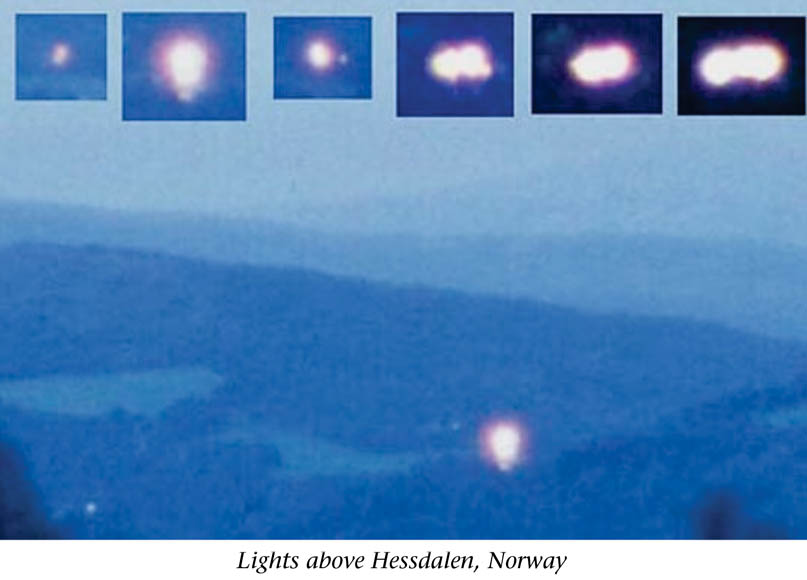
When looking for life, we look at habitat edges.
At edges where different habitats come together, we are more likely to find living things. They have access to resources from both habitats. For example, a bird near the edge of field and forest can feed in field and then shelter in forest.
Where do we find habitat edges in the sky?
At any time, about 200 giant thunderstorms rumble around our planet. Their enormous, densely rich clouds are full of water, minerals, and energy.
What do we see when we look at the edge where clear sky meets thunderstorm?
![]()
Scientists have recently discovered what they call “sprites”, giant luminous phenomena above the tops of thunderstorms. Scientists say some look like giant “jellyfish” thirty-five miles high or more.[xxii] They’ve found a variety of other transient luminous events, “an entirely new aerial bestiary.”[xxiii]
At first, scientists thought sprites were just a new form of lightning. But they’ve found that the same sprites persist for over thirty minutes.
Giant invisible sprites produce deep infrasound[xxiv] and immense gravity waves[xxv], like enormous objects pulsing and swimming in the atmosphere.
Sprites appear in groups and seem to interact with each other. Scientists are finding that sprites are more numerous than they first expected.
![]()
![]()
![]()
![]()
If organisms, from tiny to enormous, really do move in our atmosphere, wouldn’t astronauts have seen evidence of them?
They have, from almost the first missions to the present. Some of the best evidence comes from NASA’s pioneering space flights.
During John Glenn’s first earth orbit in 1962, he approached sunrise and entered a cloud of thousands of glowing particles. He said they looked like fireflies, changed direction, and proved the “biggest surprise of the flight.”[xxvi]
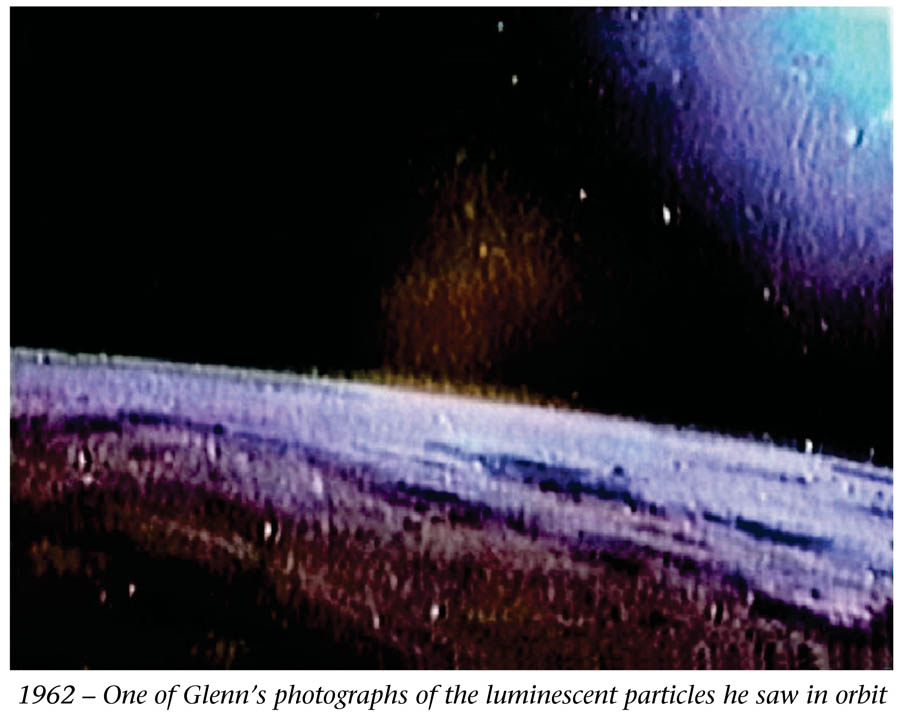
Other astronauts like Gordon Cooper and James McDivitt saw unusual objects moving in the atmosphere.
Low light cameras aboard some space shuttle flights captured amazing evidence. In 1991, pilots aboard shuttle mission STS-48 recorded objects pulsing and moving in the atmosphere. Some reacted to a flash and shot off incredibly fast.[xxvii]
Shuttle mission STS-80 in 1996 orbited above a giant storm as the crew watched with low light cameras. They saw an incredible variety of pulsing, swimming objects, including a giant glowing sprite-like disc that emerged from the clouds![xxviii]
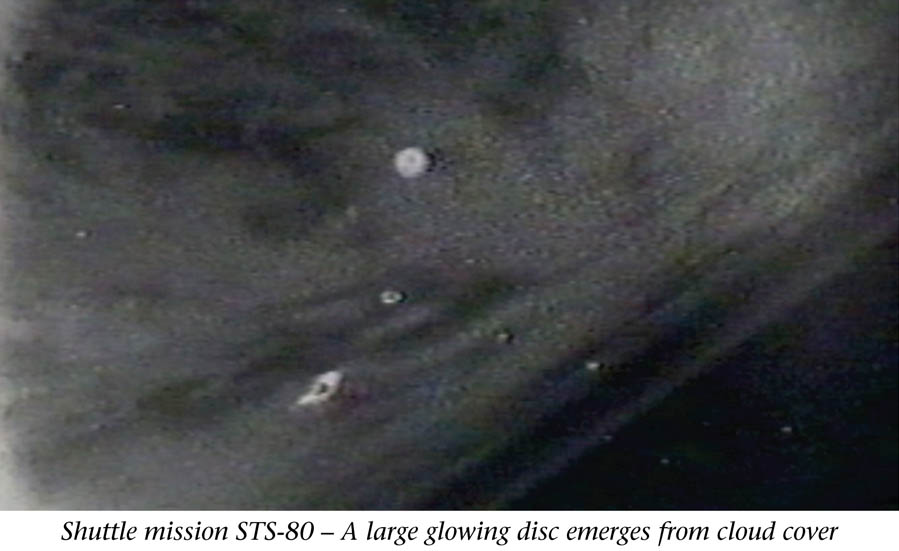
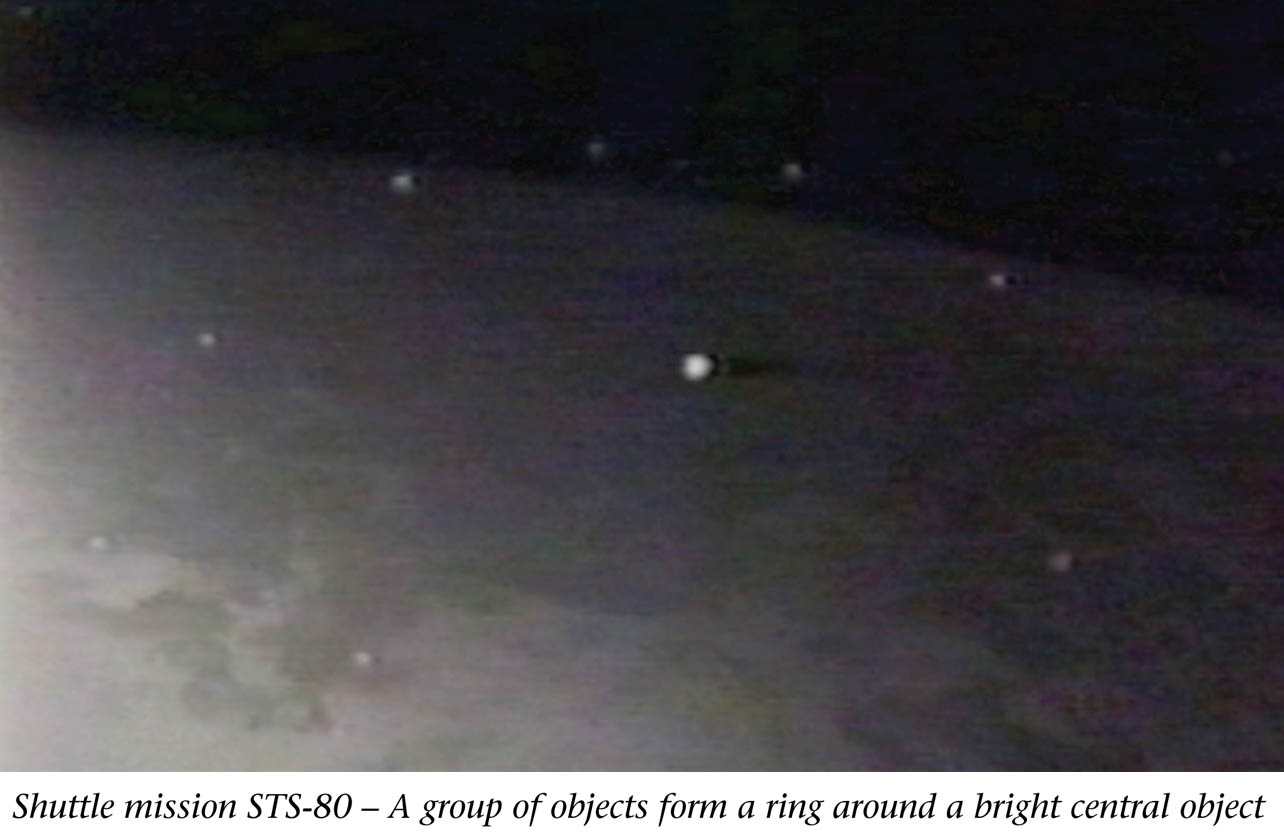
In 1996, mission STS-75 provided an important, perhaps historic piece of scientific evidence. A 12-mile long tethered satellite broke from the shuttle and floated away. The shuttle watched. About 100 miles away, the tether approached sunrise. Suddenly, a swarm of pulsing discs gathered around the tether. Some moved behind the tether, indicating that they were at least ten miles across.[xxix]
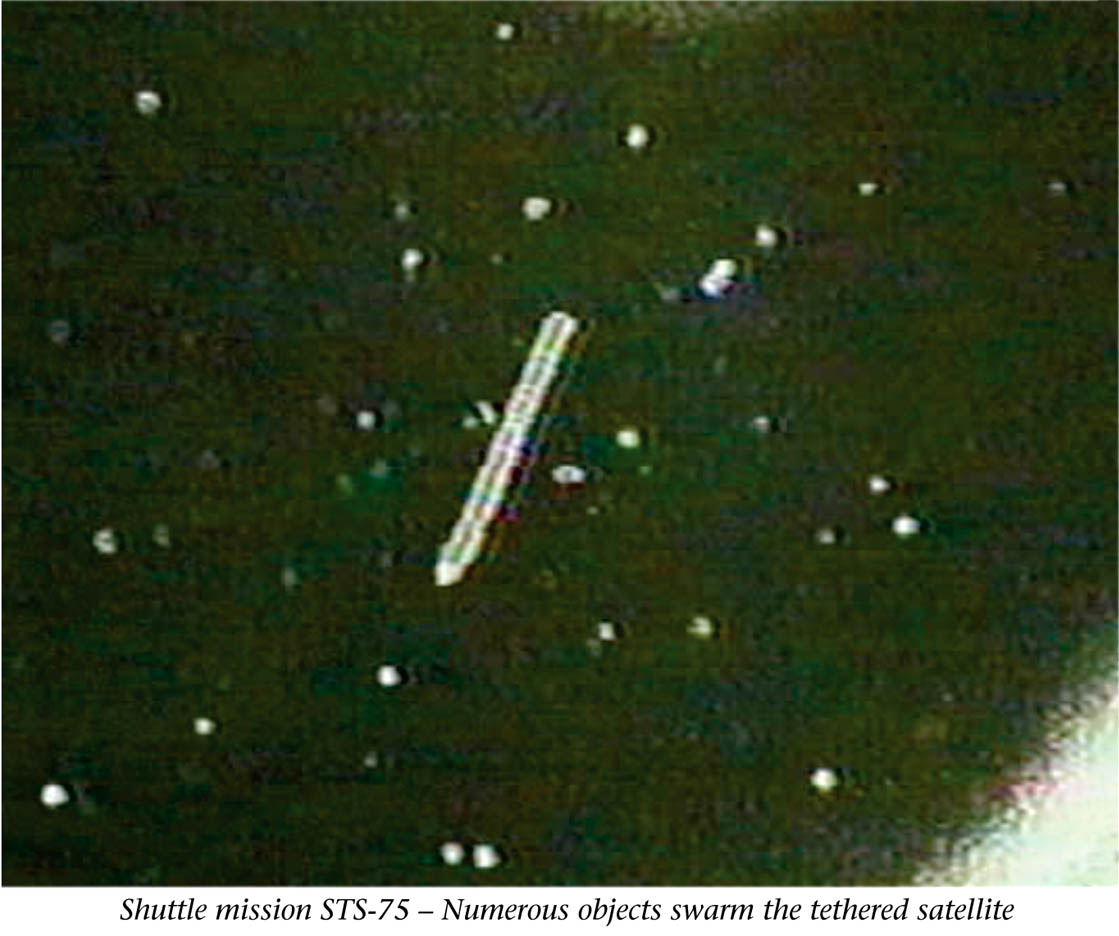
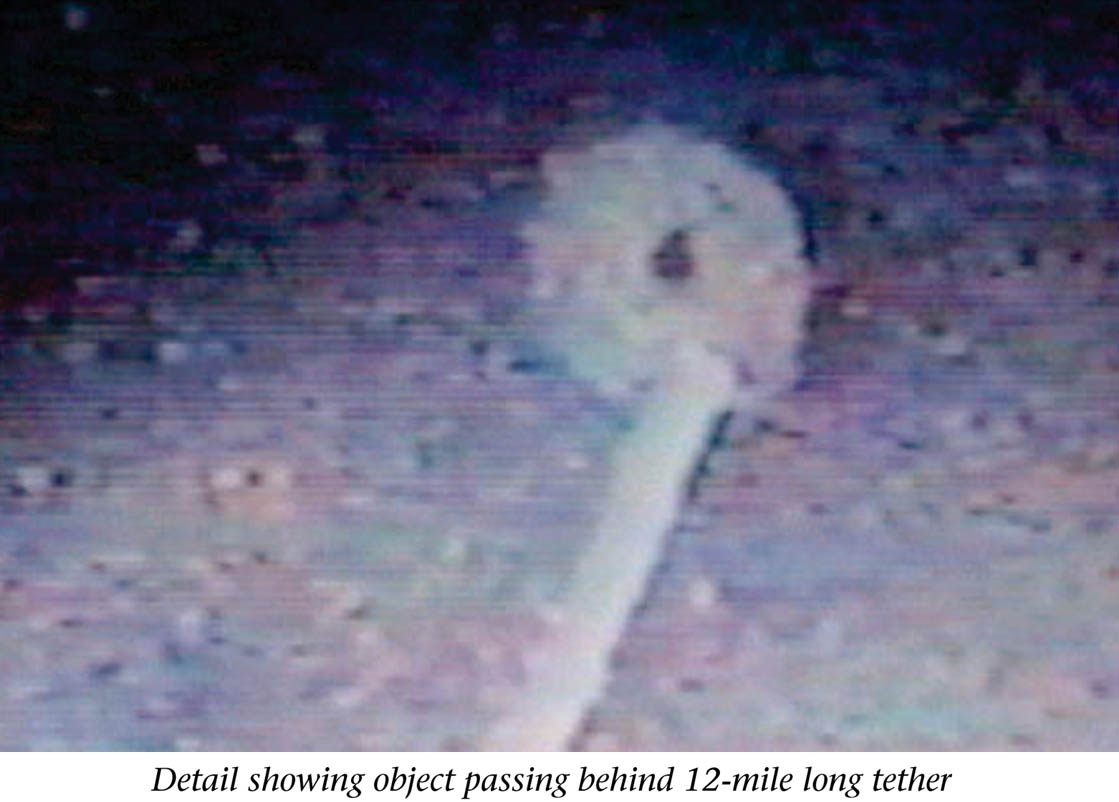
Less than four hundred years ago, Leeuwenhoek peered into tiny glass lenses and found a world no one ever suspected, with creatures smaller than ever imagined. The STS-75 Tether Incident may offer a groundbreaking glimpse at the other end of the spectrum of life, with creatures larger than ever imagined.
If various organisms move through our skies, there is urgent need to study them.
First concern is the safety of planes, space vehicles, and people on the surface.
In 1959, pilots and witnesses on the ground in Louisiana saw a giant object they said looked like a red mushroom cloud, a mile high. Some said it shot or flashed something at the commercial airliner. The airliner was torn to pieces. Investigators found incredible damage, like no other crash they had ever seen.[xxx]
The careers and mental health of some UFO witnesses have suffered from their encounters. They may benefit from knowing that they saw amazing but entirely natural phenomena.
Prompt and proper treatment of exposed witnesses may mitigate debilitating physical and psychological effects from harmful toxins.
This new perspective may offer new insight into other puzzling phenomena:
Freshwater jellyfish
How do millions of jellyfish sometimes appear in bodies of fresh water around the world where they have never been seen before? Do they reach remote ponds and lakes by somehow traveling through the air at some part of their life cycles?
Earthquake lights
Faults in the earth’s surface may provide perfect habitat niches. People have reported a range of animated lights near earthquakes. Perhaps, like other animals, aerial creatures may become active when they sense an earthquake.
Giant Wheels of Light In The Indian Ocean
Sailors report giant luminescent lights in the Indian Ocean, near where a giant jellyfish almost sank a steamer in 1973. Bands of light, sometimes miles long, rotate under and across the water. Perhaps these are actually invertebrate giants.
Falls Of Fish
Jellyfish sometimes provide living islands for other animals. They may be an ecosystem unto themselves for hundreds of fish, snails, or other aquatic creatures. If an aquatic invertebrate metamorphoses into an atmospheric one, it may purge much of its liquid body contents, including any symbiotic organisms.
The hypothesis suggests many answers, but raises some new dilemmas.
Maybe we’re not at the top of the food chain as we like to think. That’s both humbling and disconcerting.
Some sources estimate that over two thousand people go missing every day in the United States alone.[xxxi] No one can say how many abandoned vehicles are found. Each year, planes unexplainably crash and some disappear. Consider reports of saucers laden with occupants – do they have pilots, or full bellies?
Swarms of huge jellyfish clog industrial water intakes around the world. Could sky organisms similarly bloom? Could aerial “red tides” have caused past mass extinctions? Should we prepare for such events, and if so, how?

Perhaps the relationship is not all adversarial – eat, or more likely, be eaten.
Do they affect our weather? Are they a vital part of our habitat; are we of theirs?
Past cultures around the world built mounds to the sky to entice down those that dwell above.

Have they somehow been partners for progress in the past? Could they be again?
Are they extraterrestrial?
Carl Sagan speculated that giant floating organisms like jellyfish might live on Jupiter.[xxxii] Arthur C. Clarke proposed that giant jellyfish might swim on Jupiter’s moon Europa.[xxxiii]

In 1994, astronomers witnessed a sight never before seen by human eyes. About twenty pieces of comet Shoemaker-Levy slammed into Jupiter. One piece hit with more force than the earth’s entire nuclear arsenal, shooting tons of debris into space.
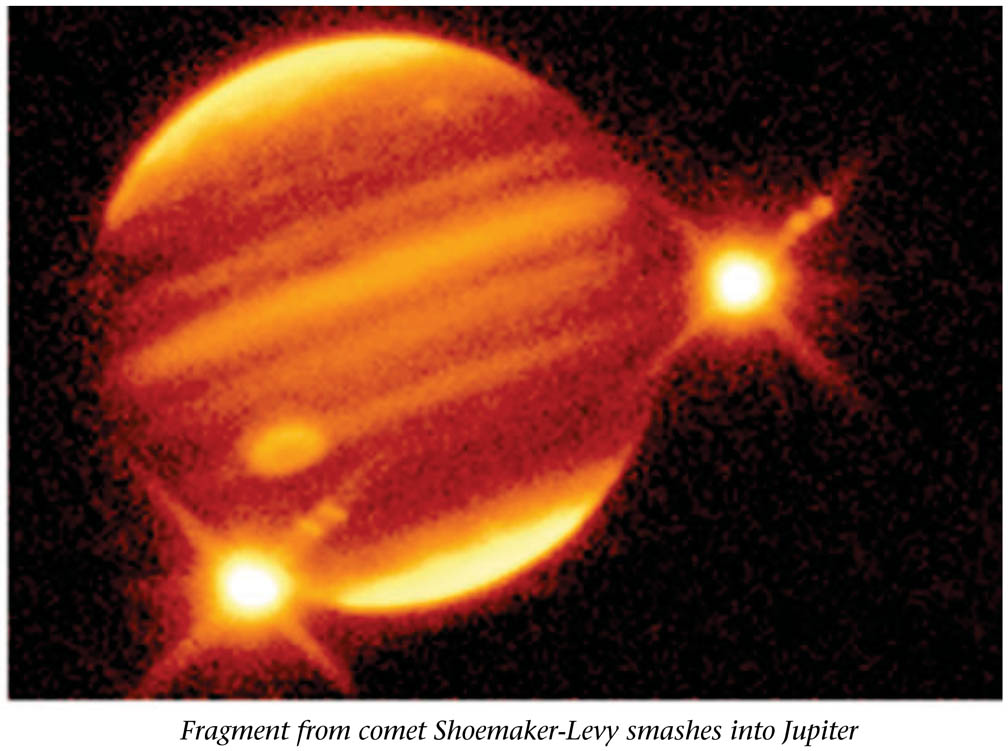
If hardy jellyfish eggs can travel through sky, over land, to freshwater ponds, can they travel across space, to the warm, moist atmosphere of Earth?
Do weird gelatinous life forms live in the fluid atmospheres of other planets?
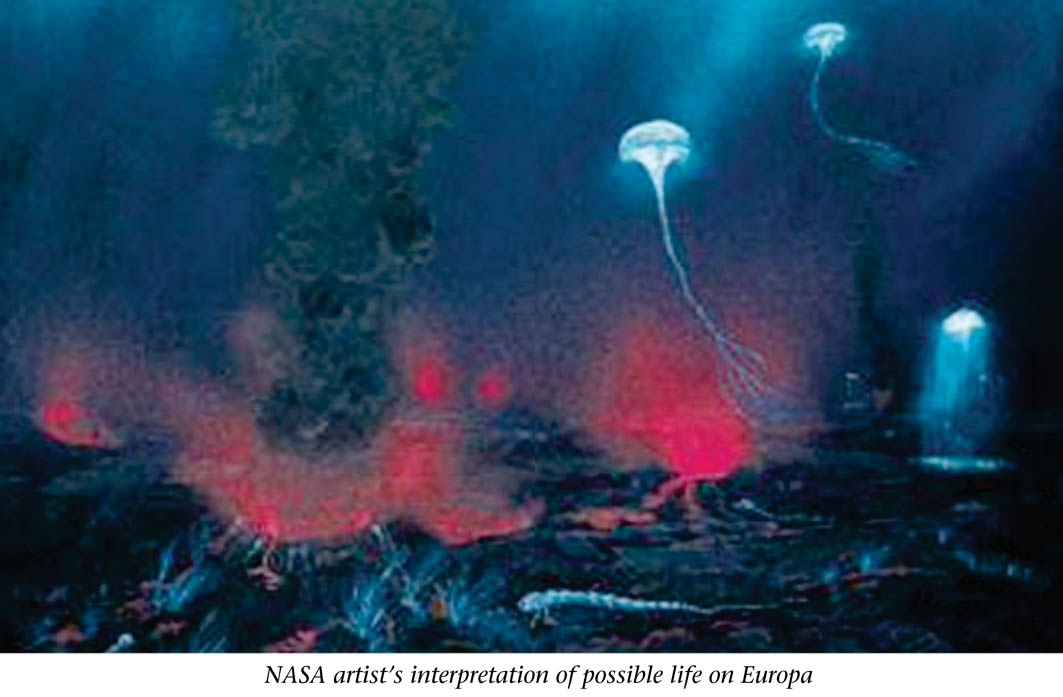
Perhaps they’re here, now…
![]()
Astrobiologists sample the earth’s upper atmosphere, trying to detect viruses and bacteria, evidence of panspermia – the spread of life across the universe. Maybe they’ll also find invertebrate eggs.
This is just an introduction to the idea and a small sample of evidence. There is so much quality evidence available for review, with multiple witnesses, and physical or visual proof.
However, the best, the only way to test the hypothesis is to study further.
GET NEW EVIDENCE
A science of aerobiology can study life in the atmosphere. More inclusively, planetary biology can study life within our planet’s complex system and beyond.
There are many avenues of further study. If we use the right technology, it may just be a matter of looking in the right places.
Cameras can expand our range of perception into ultraviolet and infrared spectra. Some detect high and low levels of light that we can’t perceive. Some can speed up and slow down time to reveal hidden events.
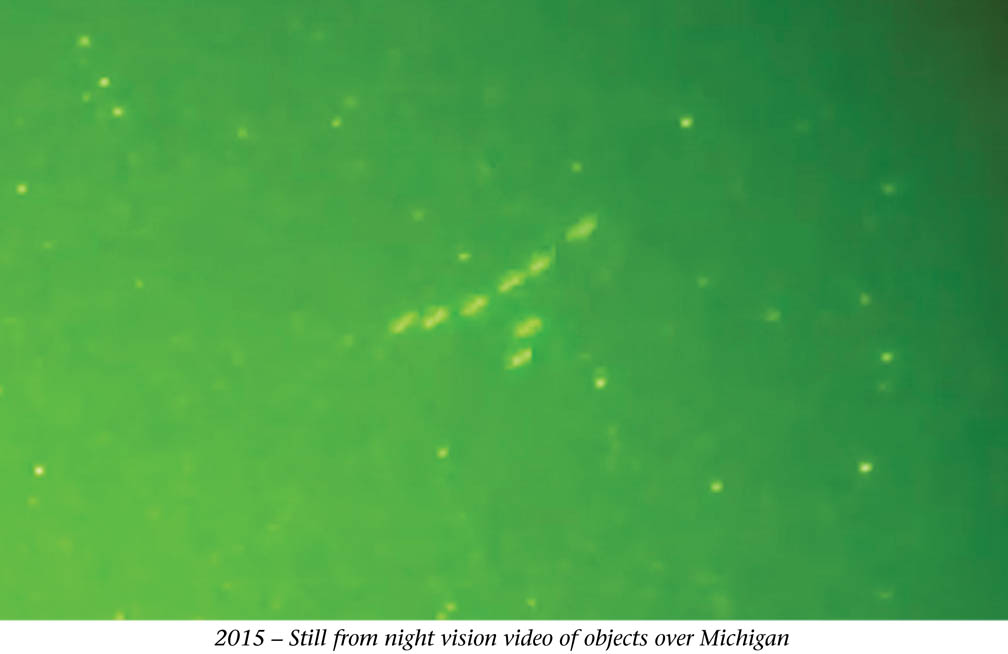
Even simple tools can help reveal the sky. A coronograph blocks the sun’s direct light while allowing views of the corona. One man simply put a camera under the edge of a roof. The sun’s bright light revealed huge organic-looking objects.[xxxiv]
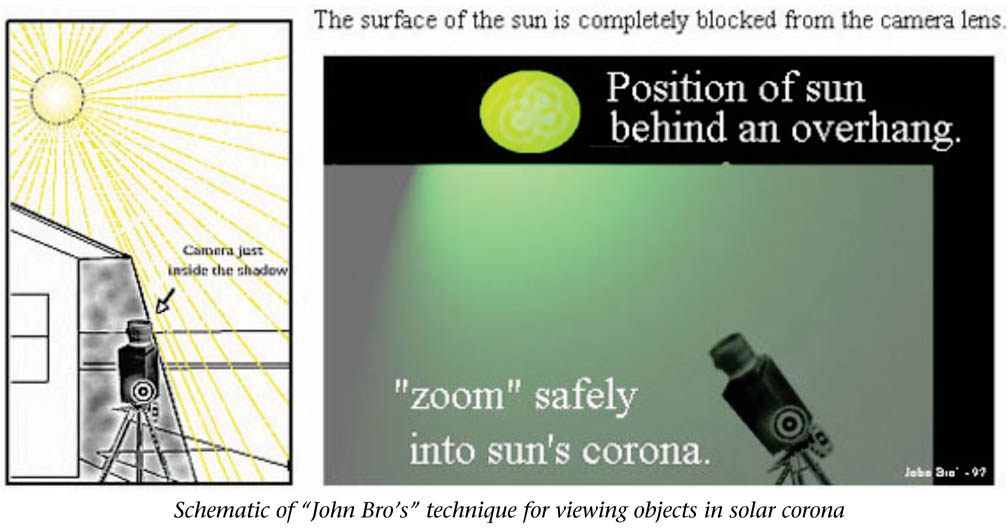
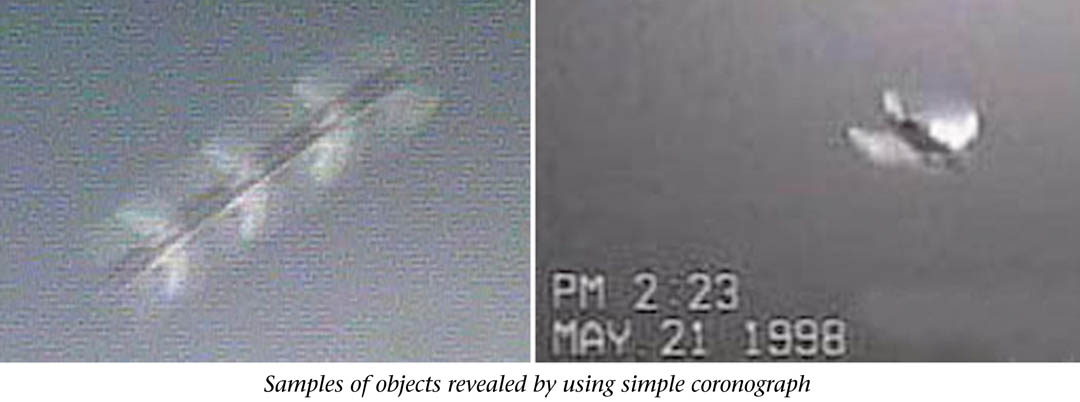
We can use balloons, planes, satellites, and ground-based observation. We can examine likely atmospheric habitat edges: geological crevices, skies near clouds and thunderstorms, and the always-moving edge between night and day.
Imagine what’s up there, still unseen.
The concept is simple, but the implications are huge.
Are we ready?
“It seems no more incredible that up in the seemingly unoccupied sky there should be hosts of living things than that the seeming blank of the ocean should swarm with life.”
– Charles Fort, NEW LANDS
[i] Graham and Mark Birdsall, “A British Perspective 1988,” The UFO Report, ed. Timothy Good (New York: Avon Books, 1989) 8.
[ii] F. Dobson, L. Hasse, and R. Davis, eds., Air-Sea Interaction: Instruments and Methods (New York: Plenum Press, 1980) v, 2.
[iii] Francis Ridge, “The Wayne City Car Chase (CE-II, E-M),” National Investigation Committee On Aerial Phenomena, 05 August 2011 http://www.nicap.org/austin.htm.
[iv] Kenneth Arnold, “Fireflies and Flying Saucers,” Flying Saucer November, 1962: 29-31.
[v] Kenneth Arnold, “How It All Began,” Proceedings Of The First International UFO Congress ed. Mary Margaret Fuller, Jerome Clark, Betty Lou White (New York: Warner Books, 1980) 27-28.
[vi] “Project Saucer” Memorandum To The Press (Washington, D.C.: National Military Establishment Office Of Public Information, 1949) 21; Technical Report, Unidentified Aerial Objects, Project “Sign” (Dayton, Ohio: Air Materiel Command, Wright-Patterson Air Force Base, 1949) 24.
[vii] Dr. Karl P.N. Shuker, From Flying Toads To Snakes With Wings (St. Paul: Llewellyn Publications, 1997) 75-76.
[viii] Vincent H. Gaddis, Mysterious Fires And Lights (New York: David McKay Company Inc., 1967) 32-33.
[ix] G. Cattiau, R. Gayral, and D. Lacenal “The Cyrus Case,” Flying Saucer Review 22.2 (July 1976): 7-10
[x] L.J. Cubitt, “Jelly Fish Swimming – Helicopter Flying Analogue,” 6th Australian Hydraulics And Fluid Mechanics Conference (Adelaide, 5-9 December 1977).
[xi] Concorde Promotional Film, British Airways, 1976.
[xii] Commander Graham E. Bethune, to Stuart Nixon, National Investigations Committee On Aerial Phenomena, Washington, D.C., 28 July 1970, Files of NICAP.
[xiii] “Huge ‘Saucer’ Armada Jolts Farmington,” Farmington Daily Times 61.194 (18 March 1950): 1.
[xiv] “RARE: Knowles Family Encounter – 20th January 1988 – Part.1,” YouTube 05 August 2011 http://www.youtube.com/watch?v=ikM8mCfvQNs; “RARE: Knowles Family Encounter – 20th January 1988 – Part.2,” YouTube 05 August 2011 http://www.youtube.com/watch?v=ncUoNxQlTXI.
[xv] Richard F. Haines and Paul Norman, “Valentich Disappearance: New Evidence And A New Conclusion,” Journal Of Scientific Exploration 14.1 (2000): 23-24.
[xvi] Pablo Villarubia Mauso, “The Incredible Saga of Joao Prestes,” UFOCasebook.com 05 August 2011 http://www.ufocasebook.com/prestes.html.
[xvii] John Schuessler, UFO-Related Human Physiological Effects (Houston: John Schuessler, 1996) 4-7.
[xviii] “The Blob,” Unsolved Mysteries 9.22, Cosgrove/Meurer Productions, 8 May 1997.
[xix] Brian Boldman, “An Analysis Of Angel Hair, 1947-2000,” International UFO Reporter 26.3 (Fall, 2001): 10-20.
[xx] Gaddis 42.
[xxi] John Keel, “North America 1966, Development Of A Great Wave,” Flying Saucer Review 13.2 (March-April 1967): 5.
[xxii] Earle R. Williams, “Sprites, Elves, and Glow Discharge Tubes,” Physics Today (November, 2001): 41.
[xxiii] Andrew Alden, “Sprites And Their Siblings,” About.com/Geology, 01 August 2011 http://geology.about.com/od/sprites/a/sprites.htm.
[xxiv] T. Farges, E. Blanc, A. Le Pichon, T. Neubert, and T. H. Allin, “Identification of infrasound produced by sprites during the Sprite2003 campaign,” Geophysical Research Letters Vol. 32, L01813 (15 January 2005).
[xxv] D.D. Sentman, E.M. Wescotta, R.H. Picard, J.R. Winick, H.C. Stenbaek-Nielsen, E.M. Dewan, D.R. Moudry, F.T. Sao Sabbas, M.J. Heavner, and J. Morrill, “Simultaneous observations of mesospheric gravity waves and sprites generated by a midwestern thunderstorm,” Journal of Atmospheric and Solar-Terrestrial Physics 65 (2003) 537 – 550.
[xxvi] Results Of The First United States Manned Orbital Space Flight (Manned Spacecraft Center, National Aeronautics And Space Administration, 20 February 1962): 131,196.
[xxvii] Low light earth limb footage, Space Shuttle Discovery Mission STS-48, National Aeronautics And Space Administration, 12-18 September 1991.
[xxviii] Low light atmosphere footage, Space Shuttle Columbia Mission STS-80, National Aeronautics And Space Administration, 19 November-7 December 1996.
[xxix] Footage of Tether Incident, Space Shuttle Columbia Mission STS-75, National Aeronautics And Space Administration, 25 February 1996.
[xxx] Brad Steiger and Joan Whritenour, Flying Saucers Are Hostile (New York: Universal Publishing And Distributing, 1967) 24-26.
[xxxi] David Krajicek, “America’s Missing,” TruTV.com 06 August 2011 http://www.trutv.com/library/crime/criminal_mind/forensics/americas_missing/2.html?print=yes.
[xxxii] Carl Sagan, “Episode 2 – One Voice In The Cosmic Fugue,” Cosmos, dir. Adrian Malone, prod. Gregory Andorfer, KCET and Carl Sagan Productions, 1980.
[xxxiii] Bill Christensen, “Europa May Support Life,” Technovelgy.com 05 August 2011 http://www.technovelgy.com/ct/Science-Fiction-News.asp?NewsNum=2602.
[xxxiv] John Bro, “‘UFOs – John Bro Technique’, 1995-Present, ‘Solar Obliteration’,” SkyMonsters.com 05 August 2011, http://skymonsters.com/UFO.html.
Dedicated to the memory of William Corliss.

